2018-03-29 - Nº 152
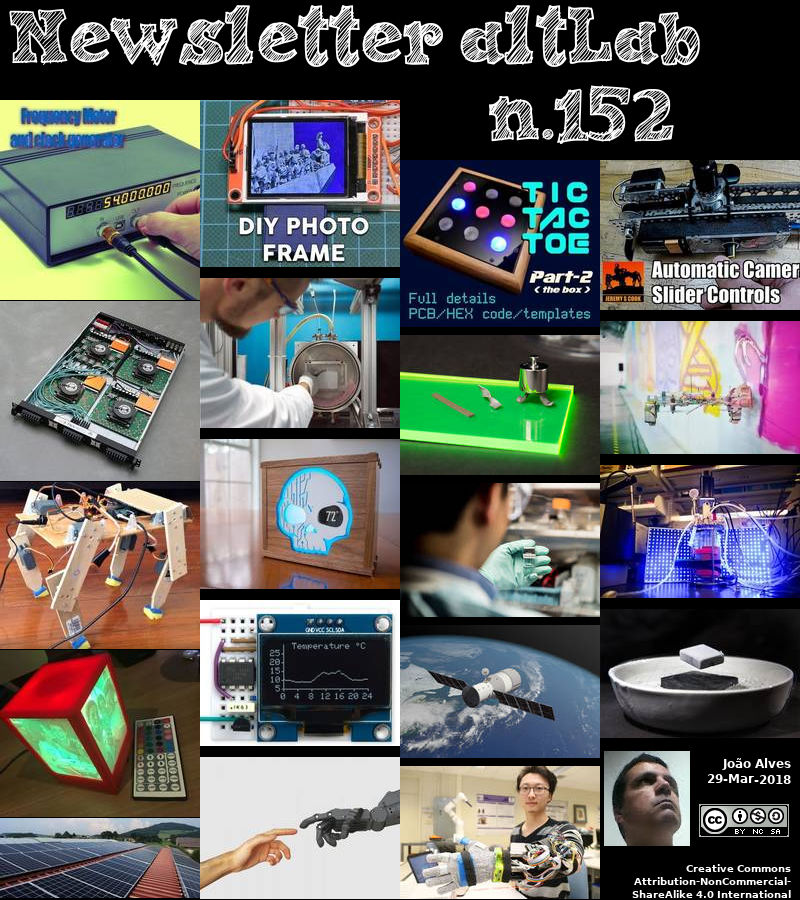
Editorial
Esta é a Newsletter Nº 152 que se apresenta com o mesmo formato que as anteriores. Se gostar da Newsletter partilhe-a!
Todas as Newsletters encontram-se indexadas no link.
Esta Newsletter tem os seguintes tópicos:
Faz anos hoje que nascia, em 1819, Edwin Drake. Este engenheiro norte-americano da industria petrolífera perfurou o primeiro poço de petróleo produtivo perto de Titusville, Pensilvânia, que lançou a indústria moderna de petróleo dos EUA. O seu sucesso em atingir o petróleo baseou-se na sua crença de que a perfuração seria a melhor maneira de obter petróleo da Terra. Ele organizou a Seneca Oil Co., arrendou terras, e em 27 de Agosto de 1859, atingiu petróleo a uma profundidade de 21 metros. Drake usou um antigo motor a vapor para alimentar a perfuradora. Depois o seu poço começou a produzir petróleo.
Faz igualmente anos hoje que nascia, em 1853, Elihu Thomson. Este engenheiro e inventor inglês-americano foi responsável por descobertas no campo dos fenómenos da corrente alternada que conduziram ao desenvolvimento de motores de corrente alternada com sucesso. Thomson inventou a soldadura eléctrica e outras invenções importantes em iluminação eléctrica e energia, com um total de cerca de 700 patentes. Thomson também foi co-fundador da indústria General Electric Company (em 1892, numa fusão com a Edison Company).
Por fim, faz anos hoje que nascia, em 1873, Tullio Levi-Civita. Este matemático italiano foi um dos fundadores do cálculo diferencial absoluto (análise tensorial) que teve aplicações na teoria da relatividade. Em 1887, ele publicou um famoso artigo em que ele desenvolveu o cálculo de tensores. Em 1900, ele publicou, em conjunto com Ricci, a teoria dos tensores "Méthodes de calcul differential absolu et leures", numa forma que foi utilizada por Einstein 15 anos depois. Weyl também usou as idéias de Levi-Civita para produzir uma teoria unificada de gravitação e electromagnetismo. Além das importantes contribuições do seu trabalho na teoria da relatividade, Levi-Civita produziu uma série de artigos tratando elegantemente o problema dum campo gravitacional estático.
Na semana que passou ficámos a saber que produção em massa de carros impressos em 3-D está a chegar. O primeiro será da XEV e da Polymaker, um construtor de materiais de impressão 3D. O carro de US $ 7.500, chamado LSEV, levou apenas três dias para ser feito, de acordo com o criador. Todos os componentes no LSEV foram impressos, excepto o chassis, assentos e vidro. O carro de dois lugares parece muito com um carro inteligente, mas não é tão rápido. A sua velocidade máxima é de cerca de 43 quilómetros por hora.
Esta semana também ficámos a saber que a China está a construir um comboio super-maglev que atingirá velocidades perto de 1.000 quilómetros por hora. Cientistas chineses construíram a primeira plataforma de testes de protótipos do mundo para um comboio de levitação magnética a vácuo de altíssima velocidade (maglev). Desenvolvido pela Southwest Jiaotong University, de Sichuan, é o primeiro circuito de teste maglev supercondutor de alta temperatura na China. O circuito de 45 metros, com uma capacidade de carga projectada de 300 kg e uma carga máxima de 1.000 kg, pode levitar o comboio para mais de 20 milímetros acima da pista. É um sistema maglev supercondutor que tem a menor secção transversal e usa a menor quantidade de materiais magnéticos permanentes. O loop é capaz de realizar testes dinâmicos que variam de 0 a 50 quilómetros por hora.
E está a aproximar-se a colisão com a Terra da estação espacial Tiangong-1. Lançada para o espaço em 2011, à cerca de dois anos atrás a agência espacial chinesa informou a perda da telemetria e por consequência do controlo da estação começando nessa altura a mesma a decair em direcção à Terra. Com o peso de 8.5 toneladas, comprimento de 10 metros e diâmetro de 3.3 metros estima-se que este objecto reentre na atmosfera terrestre entre o meio-dia do dia 31 de Março e a tarde do dia 1 de Abril (hora UTC). Não havendo a certeza do local exacto onde irão cair os destroços que sobreviverem à reentrada, as probabilidades dos mesmo colidirem com pessoas ou habitações é imensamente reduzida, sendo provável que se irão despenhar no oceano. Existem um número de fontes na Internet que permitirão acompanhar este evento.
Na Newsletter desta semana apresentamos diversos projetos de maker. São apresentados também a revista MagPI 68 e um livro sobre circuitos baseados em desenhos de referência de laboratório da Analog Devices.
 João Alves ([email protected])
João Alves ([email protected])
O conteúdo da Newsletter encontra-se sob a licença  Creative Commons Attribution-NonCommercial-ShareAlike 4.0 International License.
Creative Commons Attribution-NonCommercial-ShareAlike 4.0 International License.
Novidades da Semana
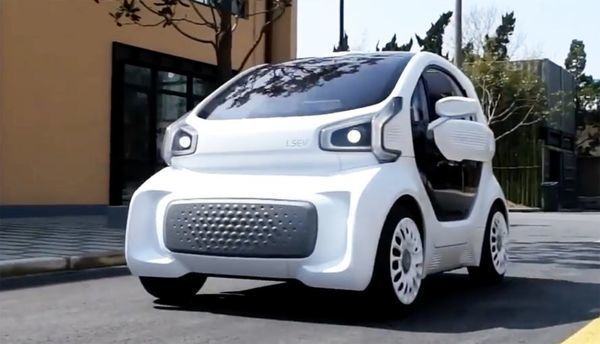
This 3-D printed electric car costs $7,500 and took three days to make
"Mass production of 3-D printed cars is coming soon. The first will be from start-up XEV and Polymaker, a developer of 3-D printing materials. The $7,500 car, called LSEV, only took three days to make according to the creator. All of the components in LSEV were printed except for the chassis, seats and glass. The two-seater looks a lot like a Smart car, but it isn't quite as fast. Its top speed is about 43 miles per hour." [...]

China testing super-maglev train that runs at 1,000 km/h
"Chinese scientists have built the world's first prototype testing platform for an ultra-high-speed vacuum magnetic levitation (maglev) train that can travel at a whopping 1,000 kilometers per hour under ideal conditions. Developed by Sichuan-based Southwest Jiaotong University, it is the first high-temperature superconducting maglev test loop in China. The 45-meter loop, with a designed load capacity of 300 kilograms and a maximum load of 1,000 kilograms, can levitate the train to over 20 millimeters above the track. It is a superconducting maglev system that has the smallest cross section and uses the smallest amount of permanent magnet materials. The loop is capable of conducting dynamic tests ranging from 0 to 50 kilometers per hour. According to team leader Deng Zigang, also professor from the Sichuan-based university, the actual load capacity of 1,000 kilograms is the core competence of the technology." [...]

How to track the spiraling Chinese space station as it falls from orbit
"China’s spiraling space station, Tiangong-1, looks like it will plummet to Earth and burn up in the atmosphere sometime on April 1st — though where it will fall is still up for debate. So if you want to keep an eye on Tiangong-1’s whereabouts over the weekend, there are numerous space agencies and websites to follow. First off, a reminder: this space station is the last thing you need to worry about. Tiangong-1 has been hyped up since it’s particularly heavy and dense, so large chunks of it are expected to survive to the ground. Plus, China lost the ability to control the station from Earth, so the country’s space agency can’t simply dump the station over open ocean. That said, the chances of Tiangong-1 crashing on a person or house are infinitesimal." [...]
Outras Notícias

Mbed OS 5.8 release: Focus on production, robustness and connectivity
"About this release Mbed OS 5.8 focuses on Mbed Enabled modules to reduce development cost, time and risk and provide go-to market value compared to traditional chip down designs. We are continuing our focus on low power with our sleep/deep sleep profiling tool, with which you can identify objects that are stopping entry into low power modes. The 5.8 release continues to strengthen Arm's connectivity portfolio with an updated LPWAN stack and updated Cellular stack with support for IoT-ready NB-IoT and CAT-M1 technologies. We have also launched the closed alpha developer trial of Mbed Studio, a free desktop IDE designed specifically for Mbed OS. In addition, this release contains many minor fixes and enhancements and brings support for 121 target development boards. In the release note below, we summarize some of the key updates to Mbed OS that are part of the Mbed OS 5.8.0 release." [...]
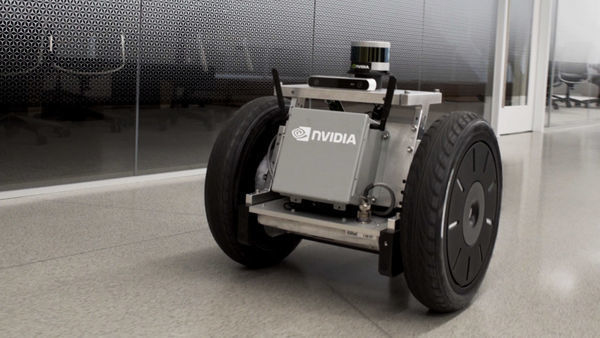
Robotics Reimagined: NVIDIA Releases Isaac SDK to Accelerate Creating Autonomous Machines
"The robotics revolution just shifted into high gear. In a move that will accelerate the development and deployment of robotics across a broad range of industries, NVIDIA announced the expansion of its Isaac platform to build robotics applications. Unveiled at the GPU Technology Conference by NVIDIA founder and CEO Jensen Huang, the Isaac software development kit is a collection of libraries, drivers, APIs and other tools. The SDK will save manufacturers, researchers, startups and developers hundreds of hours by making it easy to add AI into next-generation robots for perception, navigation and manipulation. It also provides a framework to manage communications and transfer data within the robot architecture. And it makes it easy to add sensors, manage sensor data and control actuators in real time." [...]

NVIDIA Introduces DRIVE Constellation Simulation System to Safely Drive Autonomous Vehicles Billions of Miles in Virtual Reality
"New Datacenter Solution Integrates NVIDIA DRIVE Pegasus, Runs DRIVE Sim Software for Extensive Testing and Validation of Self-Driving Cars GPU Technology Conference — NVIDIA today introduced a cloud-based system for testing autonomous vehicles using photorealistic simulation – creating a safer, more scalable method for bringing self-driving cars to the roads. Speaking at the opening keynote of GTC 2018, NVIDIA founder and CEO Jensen Huang announced NVIDIA DRIVE™ Constellation, a computing platform based on two different servers. The first server runs NVIDIA DRIVE Sim software to simulate a self-driving vehicle’s sensors, such as cameras, lidar and radar. The second contains a powerful NVIDIA DRIVE Pegasus™ AI car computer that runs the complete autonomous vehicle software stack and processes the simulated data as if it were coming from the sensors of a car driving on the road. “Deploying production self-driving cars requires a solution for testing and validating on billions of driving miles to achieve the safety and reliability needed for customers,” said Rob Csongor, vice president and general manager of Automotive at NVIDIA. “With DRIVE Constellation, we’ve accomplished that by combining our expertise in visual computing and datacenters." [...]

NVIDIA to Unleash Deep Learning in Hyperscale Datacenters
"NVIDIA CEO unveils Volta-based GV 100 for workstations, new inferencing software, technologies providing a 10x boost for deep learning, a self-driving car simulator, and more. Millions of servers powering the world’s hyperscale data centers are about to get a lot smarter. NVIDIA CEO Jensen Huang Tuesday announced new technologies and partnerships that promise to slash the cost of delivering deep learning-powered services. Speaking at the kickoff of the company’s ninth annual GPU Technology Conference, Huang described a “Cambrian Explosion” of technologies driven by GPU-powered deep learning that are bringing support for new capabilities that go far beyond accelerating images and video. “In the future, starting with this generation, starting with today, we can now accelerate voice, speech, natural language understanding and recommender systems as well as images and video,” Huang, clad in his trademark leather jacket, told an audience of 8,500 technologists, business leaders, scientists, analysts and press gathered at the San Jose Convention Center. Over the course of a two-and-a-half hour keynote, Huang also unveiled a series of advances to NVIDIA’s deep learning computing platform that deliver a 10x performance boost on deep learning workloads from just six months ago; launched GV 100, transforming workstations with 118.5 TFLOPS of deep learning performance; introduced DRIVE Constellation to run self-driving car systems for billions of simulated miles." [...]
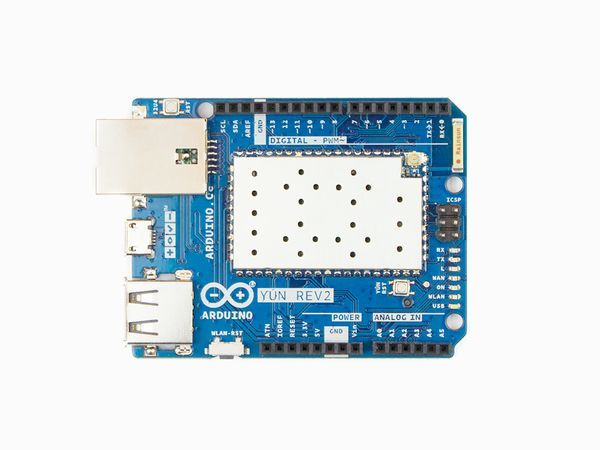
Arduino Yun Rev.2 is here!
"Since its launch in 2013, the Yùn–a small Linux machine and a microcontroller in a small Arduino form factor–found its way into hundreds of thousands of projects and professional applications. Last year, we decided that it was time for a refresh and began working hard to develop a true open-source design, with more compelling features and better overall software support. The new board, which is expected to hit the market in the second half of April, will include enhanced functionality and compatibility with its predecessor. Why a New Yùn The Yùn enjoyed tremendous success; however, it ended up being affected by the internal issues we dealt with over the past couple of years and support has been quite intermittent. For example, the board was never really an open-source product and the software had some challenges that we wanted to fix, especially from a security point of view. What’s New in Rev.2 Hardware: - Much better, more robust power supply - New Ethernet connector with a clever mounting solution that enables the use of all possible shields with no risk for accidental short circuits - Horizontal USB connector to save vertical space - Improved USB hub Software: - Software stack updated to OpenWRT latest version, including all patches - SSL support on the bridge Arduino / Linux bridge" [...]

Nissan Brain-to-Vehicle technology redefines future of driving
"Nissan unveiled research today that will enable vehicles to interpret signals from the driver’s brain, redefining how people interact with their cars. The company’s Brain-to-Vehicle, or B2V, technology promises to speed up reaction times for drivers and will lead to cars that keep adapting to make driving more enjoyable. Nissan will demonstrate capabilities of this exclusive technology at the CES 2018 trade show in Las Vegas. B2V is the latest development in Nissan Intelligent Mobility, the company’s vision for transforming how cars are driven, powered and integrated into society. “When most people think about autonomous driving, they have a very impersonal vision of the future, where humans relinquish control to the machines. Yet B2V technology does the opposite, by using signals from their own brain to make the drive even more exciting and enjoyable,” said Nissan Executive Vice President Daniele Schillaci." [...]
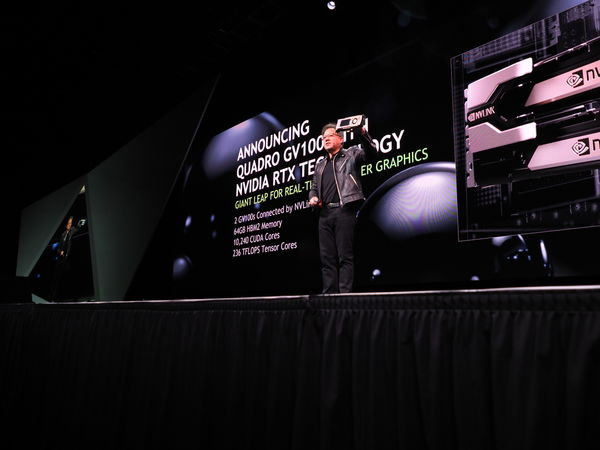
NVIDIA RTX Technology Delivers Biggest Advance in Computer Graphics in 15 Years
"GPU Technology Conference NVIDIA today announced the NVIDIA Quadro GV100 GPU with NVIDIA RTX technology, delivering for the first time real-time ray tracing to millions of artists and designers. The biggest advance in computer graphics since the introduction of programmable shaders nearly two decades ago, NVIDIA RTX when combined with the powerful Quadro GV100 GPU makes computationally intensive ray tracing possible in real time when running professional design and content creation applications. Media and entertainment professionals can see and interact with their creations with correct light and shadows, and do complex renders up to 10x faster than with a CPU alone. Product designers and architects can create interactive, photoreal visualizations of massive 3D models all in real time. NVIDIA has reinvented the workstation by taking ray-tracing technology optimized for our Volta architecture, and marrying it with the highest-performance hardware ever put in a workstation, said Bob Pette, vice president of Professional Visualization at NVIDIA. Artists and designers can simulate and interact with their creations in ways never before possible, which will fundamentally change workflows across many industries." [...]

First in the World Graffiti Drone
"First in the world graffiti-drone with entirely autonomous. The project actualized for “Evolution 2.1” exhibition took place at Winzavod. The drone created the whole exposition. The performance was going live in huge exposition workshop. The project was done in collaboration with Misha Most and Interactive Lab. Misha created the image on a computer, and drone trajectory was then calculated based on the image." [...]

'Marsquakes' Could Shake Up Planetary Science
"Starting next year, scientists will get their first look deep below the surface of Mars. That's when NASA will send the first robotic lander dedicated to exploring the planet's subsurface. InSight, which stands for Interior Exploration using Seismic Investigations, will study marsquakes to learn about the Martian crust, mantle and core. Doing so could help answer a big question: how are planets born? Seismology, the study of quakes, has already revealed some of the answers here on Earth, said Bruce Banerdt, Insight's principal investigator at NASA's Jet Propulsion Laboratory, Pasadena, California. But Earth has been churning its geologic record for billions of years, hiding its most ancient history." [...]
Ciência e Tecnologia

Research Guides Sand Sourcing For Innovative Solar Technology
"Team Advances Exploration of UAE’s Sand as Thermal Energy Storage Material for Particle Solar Receiver Technology A Khalifa University research team has taken another step towards unlocking the potential of the UAE’s sand as a thermal energy storage material with research showing the utilization of sand in a Direct Absorption Receiver (DAR) through an innovative gravity-fed solar receiver and storage system. The ‘Sandstock’ project, launched by a research team at Masdar Institute in 2013, has the aim of utilizing the UAE’s sand in place of the molten salts typically used in Concentrated Solar Power (CSP) with storage systems. That research has explored the use of sand as a material that has a higher temperature tolerance than conventional thermal storage materials while also being more environmentally friendly and lower cost. Earlier research by the team, led by Dr. Nicolas Calvet, Assistant Professor of Mechanical and Materials Engineering and Chair of the Masdar Institute Solar Platform (MISP), found that the UAE’s sand was thermally stable between approximately 650°C to 1000°C. Because conventional molten salt thermal energy storage media start to degrade at about 565°C, sand is a potentially more suitable thermal energy storage material than molten salt for high temperature Concentrated Solar Power (CSP). TES materials with high thermal stability can transfer significant heat to the working fluids that spin the turbines in CSP power plants and this makes for higher efficiency power plants." [...]
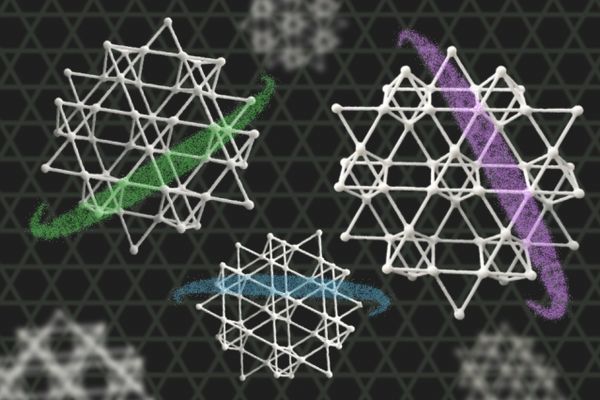
Physicists discover new quantum electronic material
"With an atomic structure resembling a Japanese basketweaving pattern, “kagome metal” exhibits exotic, quantum behavior. A motif of Japanese basketweaving known as the kagome pattern has preoccupied physicists for decades. Kagome baskets are typically made from strips of bamboo woven into a highly symmetrical pattern of interlaced, corner-sharing triangles. If a metal or other conductive material could be made to resemble such a kagome pattern at the atomic scale, with individual atoms arranged in similar triangular patterns, it should in theory exhibit exotic electronic properties. In a paper published today in Nature, physicists from MIT, Harvard University, and Lawrence Berkeley National Laboratory report that they have for the first time produced a kagome metal — an electrically conducting crystal, made from layers of iron and tin atoms, with each atomic layer arranged in the repeating pattern of a kagome lattice. When they flowed a current across the kagome layers within the crystal, the researchers observed that the triangular arrangement of atoms induced strange, quantum-like behaviors in the passing current." [...]

Weird Superconductor Leads Double Life
"Understanding strontium titanate’s odd behavior will aid efforts to develop materials that conduct electricity with 100 percent efficiency at higher temperatures. Until about 50 years ago, all known superconductors were metals. This made sense, because metals have the largest number of loosely bound “carrier” electrons that are free to pair up and flow as electrical current with no resistance and 100 percent efficiency – the hallmark of superconductivity. Then an odd one came along – strontium titanate, the first oxide material and first semiconductor found to be superconducting. Even though it doesn’t fit the classic profile of a superconductor – it has very few free-to-roam electrons – it becomes superconducting when conditions are right, although no one could explain why. Now scientists have probed the superconducting behavior of its electrons in detail for the first time." [...]
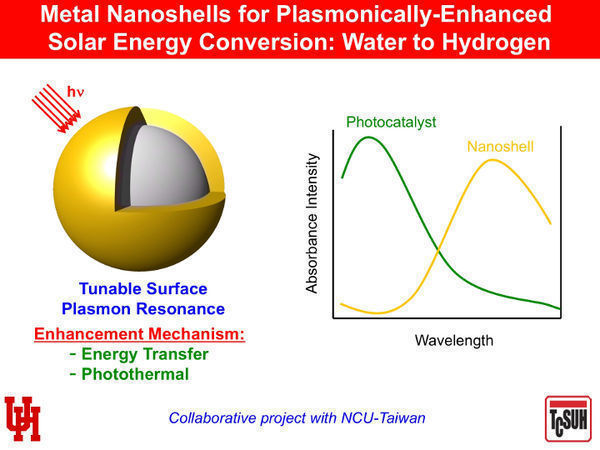
Nanomaterials Hold Promise for Producing Hydrogen from Water
"Hydrogen holds promise as an inexpensive form of clean energy, but finding an efficient and affordable way to produce the fuel from water – a technique known as water-splitting – remains a key scientific challenge. A researcher from the University of Houston is working with a colleague in Taiwan to use hollow gold-silver nanoshells to boost the efficiency of photocatalysts, where the combined nanocomposite materials generate hydrogen from water, powered only by sunlight. Randall Lee, Cullen Distinguished University Chair in chemistry and associate dean for research in the UH College of Natural Sciences and Mathematics, said the nanoshells allow the composite photocatalyst system to absorb a wider spectrum of available light, enhancing the ability of the photocatalyst to separate hydrogen from the water, leaving only oxygen as the byproduct. Lee also is affiliated with the Texas Center for Superconductivity at UH. His work on the project is funded by a $150,000 grant from the U.S. Air Force Office of Scientific Research and follows several years of participation in the U.S. Air Force-Taiwan Nanoscience Initiative. His collaborator, Tai-Chou Lee of National Central University in Taoyuan City, Taiwan, was a former post-doctoral researcher in his lab at UH." [...]

Potassium gives perovskite-based solar cells an efficiency boost
"A simple potassium solution could boost the efficiency of next-generation solar cells, by enabling them to convert more sunlight into electricity. An international team of researchers led by the University of Cambridge found that the addition of potassium iodide ‘healed’ the defects and immobilised ion movement, which to date have limited the efficiency of cheap perovskite solar cells. These next-generation solar cells could be used as an efficiency-boosting layer on top of existing silicon-based solar cells, or be made into stand-alone solar cells or coloured LEDs. The results are reported in the journal Nature. The solar cells in the study are based on metal halide perovskites – a promising group of ionic semiconductor materials that in just a few short years of development now rival commercial thin film photovoltaic technologies in terms of their efficiency in converting sunlight into electricity. Perovskites are cheap and easy to produce at low temperatures, which makes them attractive for next-generation solar cells and lighting." [...]
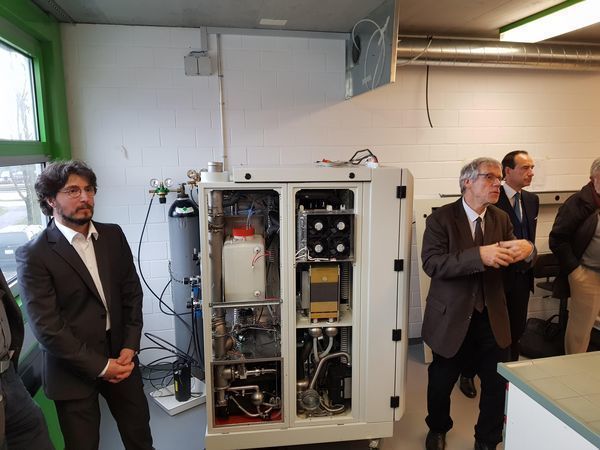
The world's first formic acid-based fuel cell
"Scientists at EPFL and GRT Group have built the world’s first integrated power supply unit that can produce electricity from formic acid, using a fuel cell in an energy-efficient, safe, cost-effective, and sustainable way. When it comes to renewable energy storage solutions, hydrogen is one of the most promising energy carriers. Using hydrogen to produce heat or electricity produces no carbon or particle emissions, meaning that it has no negative environmental impact. The problem is that hydrogen has a very low energy content by volume. This makes it very difficult to store and transport in its natural form (gas). The alternative solution is to use a hydrogen carrier such as formic acid, which is the simplest combination of hydrogen and CO2." [...]
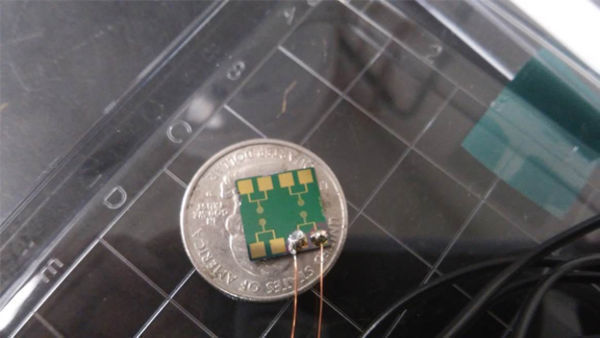
Sniffing Out the Foundational Science of Sensors
"Studying how to make and combine cutting-edge materials is leading to cheaper, more efficient, and more sensitive gaseous sensors. The human nose can distinguish among a trillion different combinations of smells. Even so, there are plenty of gases that our noses can't detect at the level of sensitivity we need. That's where gaseous sensors come in. While some of the first sensors were animals – like canaries in coal mines – we've since replaced them with technologies that can detect miniscule amounts of chemicals in the air. Just like our own noses, gaseous sensors are essential for safety and comfort." [...]

Nanocrystalline graphite enables new class of harsh environment electronics
"Researchers from the Universities of Bristol and Southampton, in collaboration with Microsemi, have demonstrated reliable operation of microelectromechanical relays by coating the contacts with nanocrystalline layers of graphite, to enable ultra-low-power electronics for harsh environments. Micro and nanoelectromechanical relays have effectively zero leakage current and can operate at much higher temperatures and levels of radiation than solid-state transistors. Such miniaturised relays have great potential to realise smart electronic components with integrated sensing, processing and actuation that are extremely energy-efficient. The work, published in Carbon, demonstrates how films of nanocrystalline graphite that have a thickness of tens of nm protects the relay tips against degradation over millions of switching cycles and provides a reliable electrical contact. The relays were designed by Dr Sunil Rana, a senior postdoctoral research associate at Bristol. The work was carried out as a collaboration between Bristol's Microelectronics research group led by Dr Dinesh Pamunuwa, and Dr Harold Chong’s group at Southampton University, with Dr Jamie Reynolds and Dr Suan Hui Pu." [...]
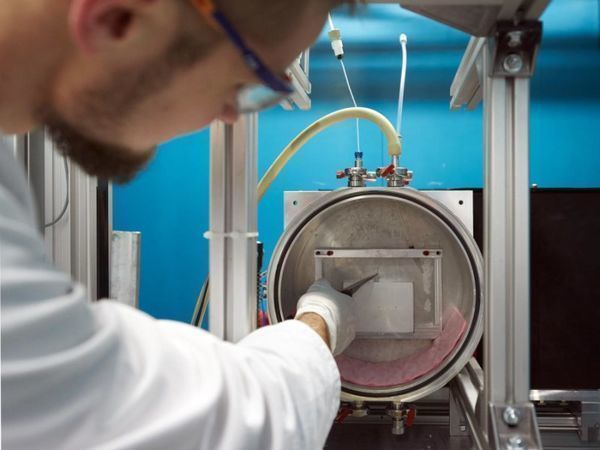
Filling lithium-ion cells faster
"Developers from Bosch and scientists at the Technical University of Munich (TUM) are using neutrons to analyze the filling of lithium ion batteries for hybrid cars with electrolytes. Their experiments show that electrodes are wetted twice as fast in a vacuum as under normal pressure. One of the most critical and time-consuming processes in battery production is the filling of lithium cells with electrolyte fluid following the placement the of electrodes in a battery cell. While the actual filling process takes only a few seconds, battery manufacturers often wait several hours to ensure the liquid is fully absorbed into the pores of the electrode stack. The fact that neutrons are hardly absorbed by the metal battery housing makes them ideal for analyzing batteries. That is why Bosch employees, in collaboration with scientists from the TU Munich and the University of Erlangen-Nuremberg, investigated the filling process at the neutron imaging and tomography facility ANTARES of the research neutron source FRM II." [...]
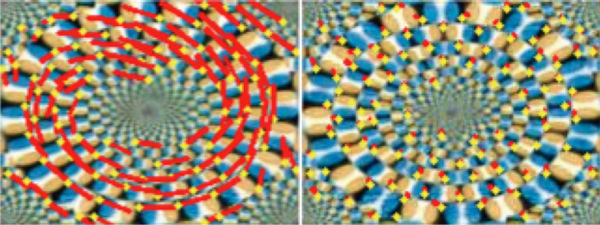
Illusory Motion Reproduced by Deep Neural Networks Trained for Prediction
"Deep neural networks (DNNs), which have been developed with reference to the network structures and the operational algorithms of the brain, have achieved notable success in a broad range of fields, including computer vision, in which they have produced results comparable to, and in some cases superior to, human experts. In recent years, DNNs have also been expected to be useful as a tool for studies of the brain. A research team led by associate professor Eiji Watanabe of the National Institute for Basic Biology successfully reproduced illusory motion by DNNs trained for prediction. The DNNs are based on predictive coding theory, which assumes that the internal models of the brain predict the visual world at all times and that errors between the prediction and the actual sensory input further refine the internal models. If the theory substantially reproduces the visual information processing of the brain, then the DNNs can be expected to represent the human visual perception of motion. In this research, the DNNs were trained with natural scene videos of motion from the point of view of the viewer, and the motion prediction ability of the obtained computer model was verified using a rotating propeller in unlearned videos and the “Rotating Snake Illusion”." [...]

New computing device would let microprocessors go 'all out'
"Imagine if Olympic skiers were forced to go down a slope on only one ski. Their ability to go “all out” would be severely hampered. Something very similar happens with the microprocessors that control everything from our computers and cell phones to digital microwave ovens. While state-of-the-art microprocessors contain billions of nanosized devices, they can use only a fraction of their capacity because of the “Dark Silicon phenomenon.” Simply put, a large percentage of the circuitry can’t be effectively turned on because heat generated due to high power dissipation would permanently damage the processor. Contributing to this problem is the “Von Neumann” architecture used for most computing systems. The processing cores have to communicate frequently with memory units located in separate pieces of hardware." [...]

Design approach developed for new catalysts for energy conversion and storage
"New method could aid in design of pharmaceuticals and optical and data storage materials Northwestern University researchers have discovered a new approach for creating important new catalysts to aid in clean energy conversion and storage. The design method also has the potential to impact the discovery of new optical and data storage materials, catalysts that impact pharmaceutical synthesis and catalysts that allow for higher efficiency processing of petroleum products at much lower cost. Scientists are continually seeking new materials to catalyze (accelerate) the chemical reactions and processes required to create a broad range of products. Identifying and creating a catalyst is complex, especially as the potential number of materials, defined by composition and particle size and shape, is overwhelming. In this study, researchers looked at the challenges of improving affordability and catalyst efficiency in the conversion and storage of clean energy. Currently, platinum-based (Pt) catalysts are the most effective and commonly used to facilitate a hydrogen evolution reaction (HER), which is, in part, the basis for how fuel cells are used to generate energy." [...]
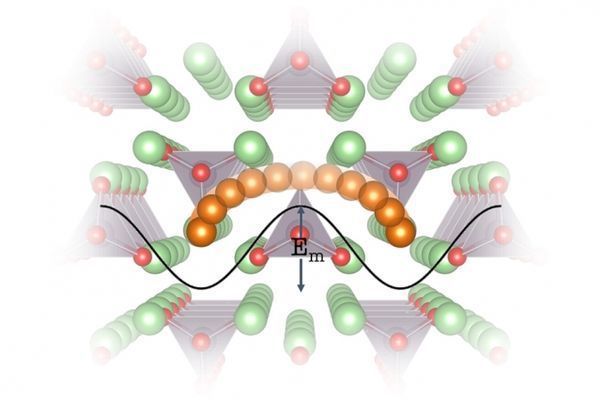
A new way to find better battery materials
"Design principles could point to better electrolytes for next-generation lithium batteries. A new approach to analyzing and designing new ion conductors — a key component of rechargeable batteries — could accelerate the development of high-energy lithium batteries, and possibly other energy storage and delivery devices such as fuel cells, researchers say. The new approach relies on understanding the way vibrations move through the crystal lattice of lithium ion conductors and correlating that with the way they inhibit ion migration. This provides a way to discover new materials with enhanced ion mobility, allowing rapid charging and discharging. At the same time, the method can be used to reduce the material’s reactivity with the battery’s electrodes, which can shorten its useful life. These two characteristics — better ion mobility and low reactivity — have tended to be mutually exclusive." [...]
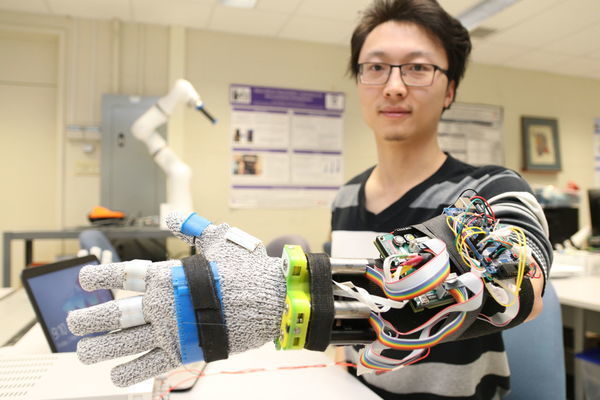
New wearable tech from Western may hold big benefits for people with Parkinson's
"A new prototype for wearable tremor suppression gloves has a team of Western University researchers believing real change is on the way for the more than 6 million people in the world afflicted by Parkinson’s disease. Ana Luisa Trejos, an Electrical and Computer Engineering professor at Western, and members of her Wearable Biomechatronics Laboratory Group have developed a novel approach for designing wearable technology that allows those with Parkinson’s to exhibit improved motor control while reducing or even restricting involuntary muscle contractions commonly associated with the long-term and degenerative neurological disorder. More than 25 per cent of people with Parkinson’s disease have an associated action tremor. Previous studies from Trejos and her team show suppression devices targeting elbows or wrists often produce exaggerated tremors in the fingers, which causes even more difficulty for those with Parkinson’s. ” If you have seen anybody with Parkinson’s that has tremors, they have them in their entire body but it’s the ones in their fingers that really prevent them from performing the activities of daily living,” explains Trejos, also a key investigator at Western’s Bone and Joint Institute. Instead of suppressing tremors, which is what most other tremor suppression devices do, these new personalized gloves actually track voluntary movement so if a person is trying to accomplish a particular task, the glove allows the action to happen while minimizing the tremor." [...]
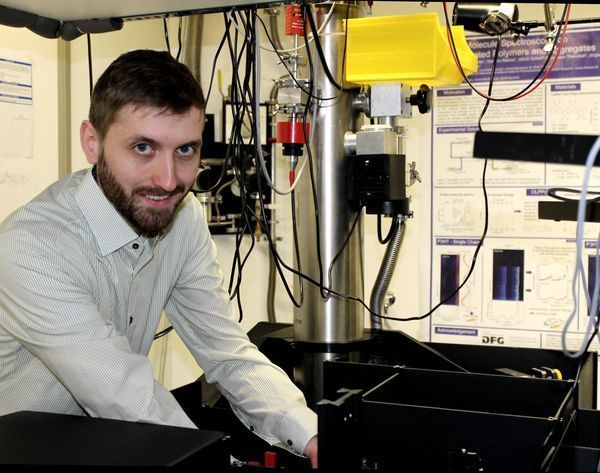
Making monitors brighter: researchers in Bayreuth discover a way to control the colour of OLEDs
"Organic light-emitting diodes (OLEDs) are used in smartphones and televisions to facilitate the high-contrast display of colours. Conjugated polymers are also often employed as organic semiconductors in such diodes. Researchers at the University of Bayreuth have found out how the spatial structure of these polymers can be used to control the colours of the OLEDs and help to increase the brightness of monitors. They have now presented this previously unknown mechanism in the scientific journal PNAS. Polymers with a backbone: spatial structures determine the colour of light Polymers that are well-suited for use in organic light-emitting diodes play a central role in the new research findings. Thanks to the chain formed by connecting molecular building blocks, they possess a backbone." [...]
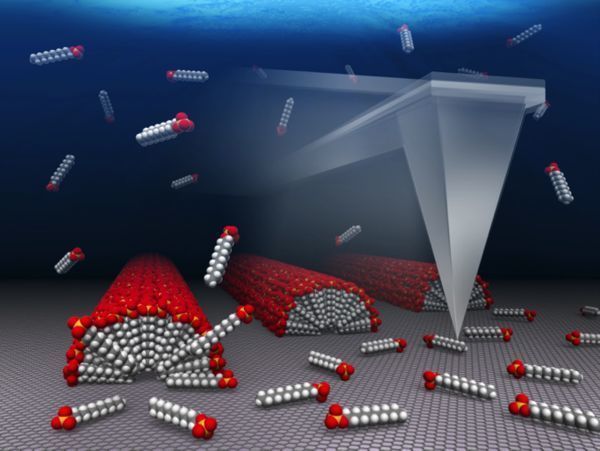
Scientists control molecular alignment on a graphene surface ~ A fluke discovery could pave the way towards improved graphene-based electronics
"Scientists at Nagoya University have developed a simple way to align molecules in one direction on a flat graphene surface. Efficiently controlling molecular alignment is expected to lead to significant progress in surface chemistry and molecular engineering, as well as materials science. A group of scientists at Nagoya University have developed a simple and powerful method to construct perfectly unidirectional molecular assembly structures on graphenes, according to a study reported in the journal Scientific Reports. Discovered accidentally during other research, the method relies on a common laboratory tool, atomic force microscopy (AFM), to control molecular alignment. Graphene, which are sheets made out of carbon, is attracting wide interest from many scientists as a powerful candidate for the next generation of electronics materials due to their unique properties. The development of a reliable method that enables the perfect alignment of molecules or molecular assemblies on a graphene surface may lead the way to tune the electric properties of graphene, and to improve the performance of graphene-based electronic devices." [...]

Golden touch: next-gen optical disk to solve data storage challenge
"Scientists from Australia and China have drawn on the durable power of gold to demonstrate a new type of high-capacity optical disk that can hold data securely for more than 600 years. The technology could offer a more cost-efficient and sustainable solution to the global data storage problem while enabling the critical pivot from Big Data to Long Data, opening up new realms of scientific discovery. The recent explosion of Big Data and cloud storage has led to a parallel explosion in power-hungry data centres. These centres not only use up colossal amounts of energy - consuming about 3 per cent of the world’s electricity supply - but largely rely on hard disk drives that have limited capacity (up to 2TB per disk) and lifespans (up to two years). Now scientists from RMIT University and Wuhan Institute of Technology, China, have used gold nanomaterials to demonstrate a next-generation optical disk with up to 10TB capacity - a storage leap of 400 per cent - and a six-century lifespan. The technology could radically improve the energy efficiency of data centres - using 1000 times less power than a hard disk centre - by requiring far less cooling and doing away with the energy-intensive task of data migration every two years." [...]

Hebrew University team claims terahertz chip breakthrough
"Hebrew University of Jerusalem physicist Dr. Uriel Levy: This is game-changing technology. Following three years of extensive research, Hebrew University of Jerusalem (HU) physicist Dr. Uriel Levy and his team have created technology that will enable our computers-and all optic communication devices-to run 100 times faster through terahertz microchips. Until now, two major challenges stood in the way of creating the terahertz microchip: overheating and scalability. However, in a paper published this week in "Laser and Photonics Review," Dr. Levy, head of HU’s Nano-Opto Group, and HU emeritus professor Joseph Shappir have shown proof of concept for an optic technology that integrates the speed of optic (light) communications with the reliability-and manufacturing scalability-of electronics. Optic communications encompass all technologies that use light and transmit through fiber optic cables, such as the internet, email, text messages, phone calls, the cloud and data centers. Optic communications are super-fast but in microchips they become unreliable and difficult to replicate on a large scale." [...]
Reducing noise in silicon quantum dots boosts calculation precision
"The quantum equivalents of computer bits can be manipulated quicker and more precisely by using techniques that liberate them from intrinsic ‘hyperfine noise’ Using ultrapure crystals of silicon and micromagnets, RIKEN researchers have demonstrated enhanced electrical control over the directions in which electron spins point inside tiny boxes in silicon called quantum dots1. This approach, which operates quantum logic gates with 99.9 per cent precision, offers an attractive pathway for manufacturing fault-tolerant quantum computers on a large scale. Quantum bits, or ‘qubits’, exploit quantum superposition states to generate far higher computational powers than conventional semiconductor circuits. Electron spins are leading candidates for such qubits, which can be implemented in structures similar to today’s computing devices. To perform practical numbers of computing operations, these spin qubits need to maintain the superposition of ‘up’ and ‘down’ spin orientations for extended times—a property known as coherence. Unfortunately, these spin states are highly sensitive to magnetic noise from surrounding atoms, such as those on silicon chips." [...]
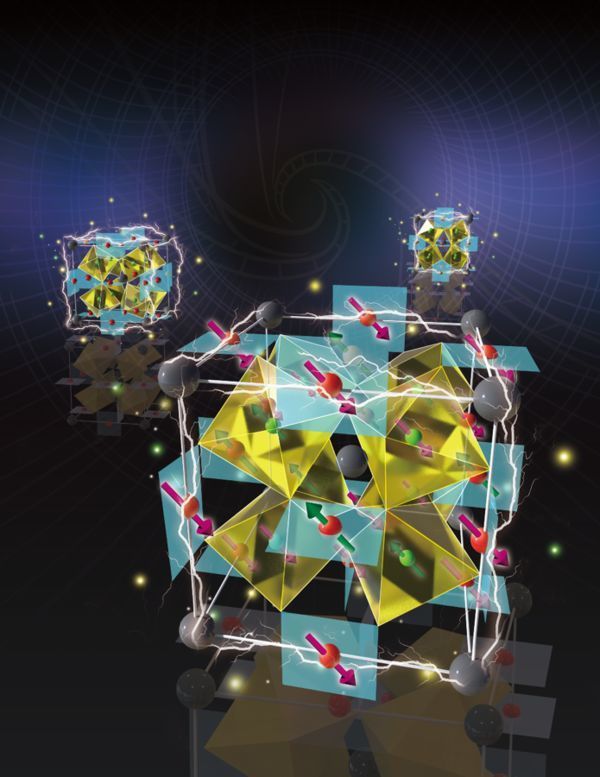
Neutrons help demystify multiferroic materials
"Materials used in electronic devices are typically chosen because they possess either special magnetic or special electrical properties. However, an international team of researchers using neutron scattering recently identified a rare material that has both. In their paper published in Advanced Materials, the team, including researchers from the Department of Energy’s Oak Ridge National Laboratory, illustrates how this unique marriage is achieved in the multiferroic material BiMn3Cr4O12. Many materials are known for just one characteristic magnetic or electrical property, or for having the ability to change shape, but multiferroics contain some combination of these attributes. Multiferroics are typically divided into two distinct categories: conventional (type-1) and unconventional (type-2). Conventional multiferroics are predominantly controlled by electricity and exhibit weak interactions with magnetism." [...]
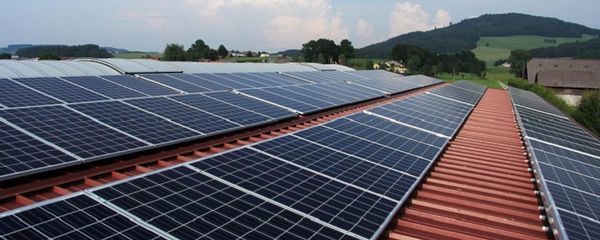
Researchers refute 20-year-old assumptions in solar cell production
"Research led by the University of Luxembourg investigated the manufacturing process of solar cells. The researchers proved that assumptions on chemical processes that were commonplace among researchers and producers for the past 20 years are, in fact, inaccurate. The physicists published their findings in the renowned scientific journal Nature Communications. Optimising the efficiency of solar panels Photovoltaic solar panels convert sunlight into electrical power. The panels absorb the incoming light which excites electrons sending them off in a predefined direction in order to generate an electric current that can drive motors or light a bulb. This works through the interaction of several layers of semiconductors and metals in the solar panel." [...]

Jonsson School Team Charges Ahead to Develop Better Batteries
"They die at the most inconvenient times. Cellphones go dark during important conversations because a battery hasn’t been recharged. Or the automotive industry revs up with excitement for a new battery-powered vehicle, but it needs frequent recharging. Or yardwork is delayed because the battery for your string trimmer is dead. Researchers at The University of Texas at Dallas have developed a high-powered, environmentally safe lithium-sulfur substitute that could drastically lengthen battery life. Their work has been published in the journal Nature Nanotechnology." [...]

Robotic collaboration in timber construction
"Researchers from ETH Zurich are using a new method for digital timber construction in a real project for the first time. The load-bearing timber modules, which are prefabricated by robots, will be assembled on the top two floors at the DFAB HOUSE construction site. Digitalisation has found its way into timber construction, with entire elements already being fabricated by computer-aided systems. The raw material is cut to size by the machines, but in most cases it still has to be manually assembled to create a plane frame. In the past, this fabrication process came with many geometric restrictions. Under the auspices of the National Centre of Competence in Research (NCCR) Digital Fabrication, researchers from ETH Zurich’s Chair of Architecture and Digital Fabrication have developed a new, digital timber construction method that expands the range of possibilities for traditional timber frame construction by enabling the efficient construction and assembly of geometrically complex timber modules." [...]

Researchers Use 3-D Printing to Create Metallic Glass Alloys in Bulk
"Researchers have now demonstrated the ability to create amorphous metal, or metallic glass, alloys on large scales using three-dimensional (3-D) printing technology, opening the door to a variety of applications – such as more efficient electric motors, better wear-resistant materials, higher strength materials, and lighter weight structures. “Metallic glasses lack the crystalline structures of most metals – the amorphous structure results in exceptionally desirable properties,” says Zaynab Mahbooba, first author of a paper on the work and a Ph.D. student in North Carolina State University’s Department of Materials Science and Engineering. Unfortunately, making metallic glass requires rapid cooling to prevent the crystalline structure from forming. Historically, that meant researchers could only cast metallic glasses into small thicknesses. For example, amorphous iron alloys could be cast no more than a few millimeters thick. That size limitation is called an alloy’s critical casting thickness." [...]
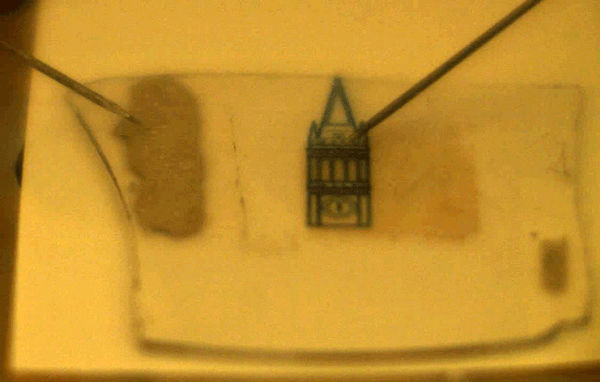
Atomically thin light emitting device opens the possibility for 'invisible' displays
"UC Berkeley engineers have built a bright-light emitting device that is millimeters wide and fully transparent when turned off. The light emitting material in this device is a monolayer semiconductor, which is just three atoms thick. The device opens the door to invisible displays on walls and windows – displays that would be bright when turned on but see-through when turned off — or in futuristic applications such as light-emitting tattoos, according to the researchers. “The materials are so thin and flexible that the device can be made transparent and can conform to curved surfaces,” said Der-Hsien Lien, a postdoctoral fellow at UC Berkeley and a co-first author along with Matin Amani and Sujay Desai, both doctoral students in the Department of Electrical Engineering and Computer Sciences at Berkeley. Their study was published March 26 in the journal Nature Communications. The work was funded by the National Science Foundation and the Department of Energy." [...]
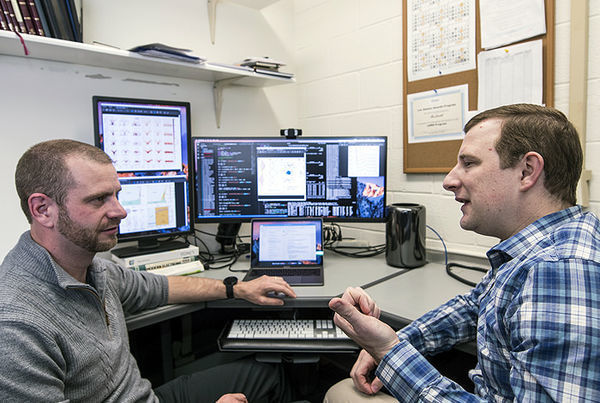
Self-assembling, tunable interfaces found in quantum materials
"A potential revolution in device engineering could be underway, thanks to the discovery of functional electronic interfaces in quantum materials that can self-assemble spontaneously. Highly adaptive electronics could be created using quantum features A potential revolution in device engineering could be underway, thanks to the discovery of functional electronic interfaces in quantum materials that can self-assemble spontaneously. “This illustrates that if we can learn to control and exploit the remarkable properties at the interfaces of quantum materials, this will likely result in a new generation of devices beyond our current imagination,” said Marc Janoschek, a physicist at Los Alamos National Laboratory who, with David Fobes, also of Los Alamos, co-led the international research team making the discovery. Their findings were published today in Nature Physics. “However, because quantum materials are chemically much more complex compared to ‘conventional’ materials such as semiconductors, it remains a challenge to fabricate clean quantum material interfaces.” Materials with properties characterized by the laws of quantum mechanics rather than classical mechanics often have features such as superconductivity. But extensive research has shown that at interfaces between two materials, the remarkable properties of quantum materials can be strongly enhanced or entirely new functional properties may arise." [...]

Switching gears towards efficient datacenters with photonics
"How can we scale-up datacenters in such a way that they can handle more data at lower cost, while consuming less energy? At Eindhoven University of Technology, PhD student Gonzalo Guelbenzu developed strategies to process the same amount of data at half the energy consumption, and taking up only one quarter of the space that is currently needed. With the rise of cloud computing services like Facebook and Google, datacenters have to process exponentially increasing amounts of information. To fulfill the need for more bandwidth, they keep adding more servers, leading to enormous datacenters which currently in The Netherlands alone consume about 2 Terawatt-hour a year ̶ 2 percent of the total national electrical energy consumption. In the Electro-Optical Communications group of the Institute for Photonic Integration, Gonzalo Guelbenzu focused on improving the network which interconnects all of the servers inside the datacenter, since there most of the data traffic happens and the performance bottleneck occurs. The information processed in datacenters is transported through fast optical networks from server to server." [...]
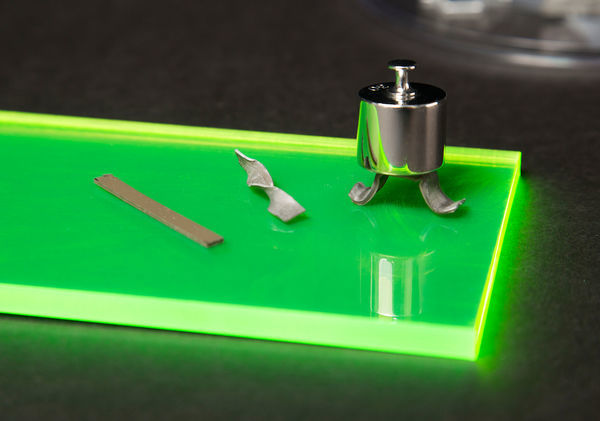
Engineers develop smart material that changes stiffness when twisted or bent
"A new smart and responsive material can stiffen up like a worked-out muscle, say the Iowa State University engineers who developed it. Stress a muscle and it gets stronger. Mechanically stress the rubbery material – say with a twist or a bend – and the material automatically stiffens by up to 300 percent, the engineers said. In lab tests, mechanical stresses transformed a flexible strip of the material into a hard composite that can support 50 times its own weight. This new composite material doesn’t need outside energy sources such as heat, light or electricity to change its properties. And it could be used in a variety of ways, including applications in medicine and industry." [...]
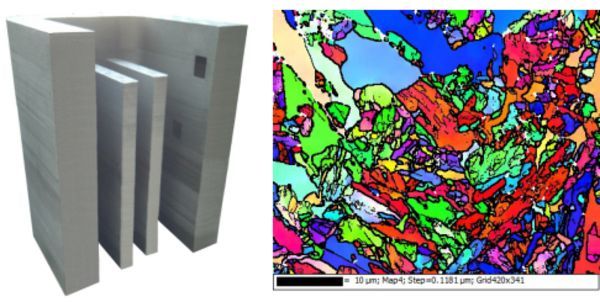
INEST-FDS Team makes breakthroughs in 3D printing of Fusion Reactor Key Components
"Researchers from Institute of Nuclear Energy Safety Technology (INEST), Chinese Academy of Sciences•FDS Team have successfully created and tested a key component module of fusion reactor using 3D printing. They applied 3D printing technology in creating the first wall of test blanket module, one of the key components for fusion reactor. The dimensional precision of the component meet the design requirements. Their research was published on Journal of Nuclear Materials in March, 2018. The key component was created with China Low Activation Martensitic (CLAM) steel, a China-developed neutron irradiation resistant steel that is mainly used for fusion reactor and advanced fission reactor. According to the research, there are many technical problems when making the complex components of fusion reactors." [...]

Researchers develop new flexible sensor for highly sensitive measurement in small spaces
"Researchers have developed a new flexible sensor with high sensitivity that is designed to perform variety of chemical and biological analyses in very small spaces. The sensor's small size means that it could potentially be used inside blood vessels. With additional development, the sensor might be used to detect specific chemicals, DNA molecules or viruses. "Our new fiber sensor has a simple structure and is inexpensive to make while being small enough for highly sensitive measurement in narrow areas," said Chao Chen, a member of the research team from the Changchun Institute of Optics, Fine Mechanics and Physics, Chinese Academy of Sciences, China. "In the future, it could be used for chemical and biological sensing in a variety of applications." The new sensor consists of a 1-millimeter long portion of the end of an optical fiber that narrows and is bent into a configuration called an S taper." [...]
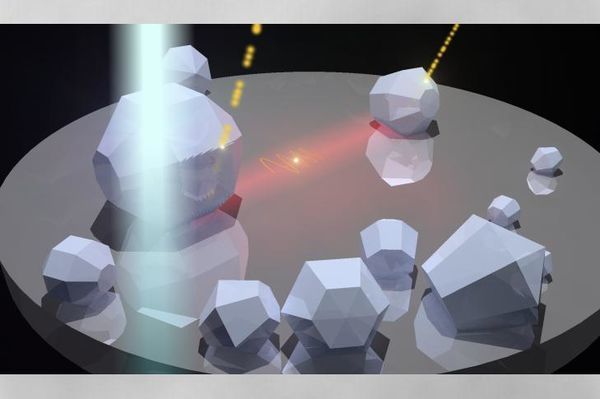
Putting quantum scientists in the driver's seat
"Scientists at the Department of Energy’s Oak Ridge National Laboratory are conducting fundamental physics research that will lead to more control over mercurial quantum systems and materials. Their studies will enable advancements in quantum computing, sensing, simulation, and materials development. The researchers’ experimental results were recently published in Physical Review B Rapid Communication and Optics Letters. Quantum information is considered fragile because it can be lost when the system in which it is encoded interacts with its environment, a process called dissipation. Scientists with ORNL’s Computing and Computational Sciences and Physical Sciences directorates and Vanderbilt University have collaborated to develop methods that will help them control—or drive—the “leaky,” dissipative behavior inherent in quantum systems. “Our goal is to develop experimental platforms that allow us to probe and control quantum coherent dynamics in materials,” said Benjamin Lawrie, a research scientist in the Quantum Sensing Team in ORNL’s Quantum Information Science Group." [...]
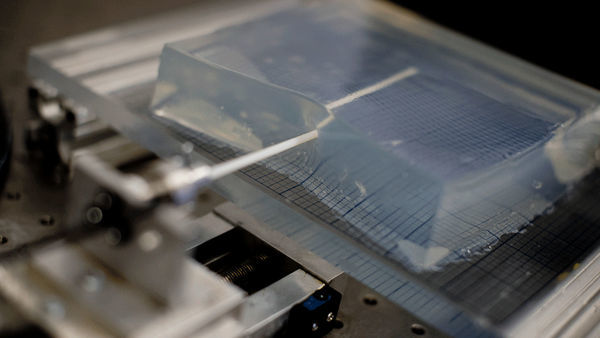
Engineers find unusual inspiration for 3-D printed surgical needle design
"The needles, designed by Associate Professor of Mechanical Engineering Parsaoran Hutapea and PhD candidate Mohammad Sahlabadi, are on display at the Franklin Institute. While developing a new concept for a 3-D printed surgical needle, Associate Professor of Mechanical Engineering Parsaoran Hutapea and PhD candidate Mohammad Sahlabadi found an unusual muse: honeybees. “I told [Mohammad] we should try to look at nature, such as mosquitos, honeybees, wasps, etc.,” said Hutapea, who’s been using 3-D printing technology to develop surgical needles since 2011 with the support of a Department of Defense grant. “We brought some honeybees into the lab, and took out and inspected their stingers using a microscope. The way honeybees sting human skin is very attractive for what we’re trying to develop, because, due mainly to the stinger’s barbs, it goes relatively smoothly straight through the skin and into the tissue.” In developing the surgical needles, made from a blend of polymers, Hutapea and Sahlabadi hope to create instruments that can decrease tissue damage while increasing precision. Using the bees’ stingers as inspiration, they devised a design with small barbs (notches) carved into the needle." [...]

A New Theory Improves Button Designs
"Pressing a button appears effortless. People easily dismisses how challenging it is. Researchers at KAIST and Aalto University in Finland, created detailed simulations of button-pressing with the goal of producing human-like presses. The researchers argue that the key capability of the brain is a probabilistic model. The brain learns a model that allows it to predict a suitable motor command for a button. If a press fails, it can pick a very good alternative and try it out." [...]

The Future of Photonics Using Quantum Dots
"Quantum-dot lasers are promising for integrated photonic circuits Thousands of miles of fiber-optic cables crisscross the globe and package everything from financial data to cat videos into light. But when the signal arrives at your local data center, it runs into a silicon bottleneck. Instead of light, computers run on electrons moving through silicon-based chips -- which, despite huge advances, are still less efficient than photonics. To break through this bottleneck, researchers are trying to integrate photonics into silicon devices. They've been developing lasers -- a crucial component of photonic circuits -- that work seamlessly on silicon. In a paper appearing this week in APL Photonics, from AIP Publishing, researchers from the University of California, Santa Barbara write that the future of silicon-based lasers may be in tiny, atomlike structures called quantum dots." [...]
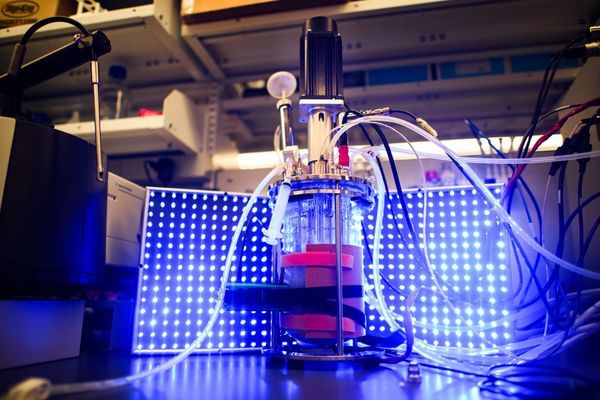
Researchers use light to turn yeast into biochemical factories
"Scientists have recently learned how to use light to control specific groups of neurons to better understand the operation of the brain, a development that has transformed areas of neuroscience. Researchers at Princeton University have now applied a similar method to controlling the metabolism, or basic chemical process, of a living cell. In a series of experiments, they used light to control genetically modified yeast and increase its output of commercially valuable chemicals. The results offer scientists a powerful new tool to probe and understand the inner working of cells. “This technique allows us to control the metabolism of cells in an unprecedented way,” said co-lead researcher José Avalos, an assistant professor of chemical and biological engineering and the Andlinger Center for Energy and the Environment. “It opens the door to controlling metabolism with light.” Yeast has been used for centuries to make bread, wine and beer." [...]

New glass-like polymer could conduct electricity for transparent electronics
"Purdue researchers have created a transparent polymer film that also conducts electricity, introducing an inexpensive organic material for applications such as the screens of electronic devices. While some polymers can already conduct electricity with the help of a process called chemical doping, none have yet been made that conduct just as well in a transparent form. This combination could find use in TV, phone and computer screens that currently use a relatively expensive inorganic material, indium tin oxide, to serve as a transparent conductor. The researchers detail their discovery in a paper published on March 23 in Science. “The precursors of this new polymer are made on the ton scale,” said Bryan Boudouris, the Robert and Sally Weist Associate Professor of Chemical Engineering. “Having a conducting transparent material from carbon-based materials would be significant.” The polymer film, which has the look and feel of glass, can be more cheaply produced on a large scale than indium tin oxide because it originates from earth-abundant materials." [...]
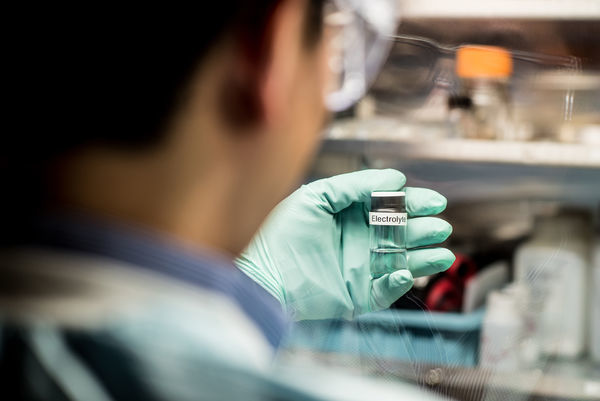
Research hints at double the driving range for electric vehicles
"When it comes to the special sauce of batteries, researchers at the Department of Energy's Pacific Northwest National Laboratory have discovered it's all about the salt concentration. By getting the right amount of salt, right where they want it, they've demonstrated a small lithium-metal battery can re-charge about seven times more than batteries with conventional electrolytes. A battery's electrolyte solution shuttles charged atoms between electrodes to generate electricity. Finding an electrolyte solution that doesn't corrode the electrodes in a lithium-metal battery is a challenge but the PNNL approach, published online in Advanced Materials, successfully creates a protective layer around the electrodes and achieves significantly increased charge/discharge cycles. Conventional electrolytes used in lithium-ion batteries, which power household electronics like computers and cell phones, are not suitable for lithium-metal batteries. Lithium-metal batteries that replace a graphite electrode with a lithium electrode are the 'holy grail' of energy storage systems because lithium has a greater storage capacity and, therefore, a lithium-metal battery has double or triple the storage capacity." [...]

3-DIY: Printing your own bioprinter
"Researchers in Adam Feinberg’s lab have developed a low-cost 3-D bioprinter by modifying a standard desktop 3-D printer, and they have released the breakthrough designs as open source so that anyone can build their own system. Researchers at Carnegie Mellon University have developed a low-cost 3-D bioprinter by modifying a standard desktop 3-D printer, and they have released the breakthrough designs as open source so that anyone can build their own system. The researchers—Materials Science and Engineering (MSE) and Biomedical Engineering (BME) Associate Professor Adam Feinberg, BME postdoctoral fellow TJ Hinton, and Kira Pusch, a recent graduate of the MSE undergraduate program—recently published a paper in the journal HardwareX that contains complete instructions for printing and installing the syringe-based, large volume extruder (LVE) to modify any typical, commercial plastic printer. “What we’ve created,” says Pusch, “is a large volume syringe pump extruder that works with almost any open source fused deposition modeling (FDM) printer. This means that it’s an inexpensive and relatively easy adaptation for people who use 3-D printers.” As the researchers explain in their paper, “Large volume syringe pump extruder for desktop 3D printers,” most commercial 3-D bioprinters currently on the market range in cost from $10,000 to more than $200,000 and are typically proprietary machines, closed source, and difficult to modify. “Essentially, we’ve developed a bioprinter that you can build for under $500, that I would argue is at least on par with many that cost far more money,” says Feinberg, who is also a member of the Bioengineered Organs Initiative at Carnegie Mellon." [...]
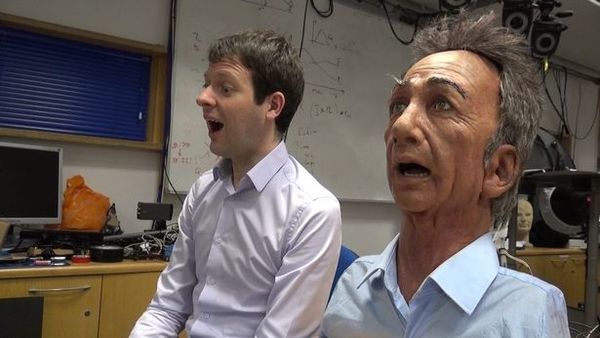
Meet the robot that can mimic human emotion
"A robot has been built at Cambridge University that can mimic the facial expressions of human beings. Charles the robot is part of research being done at the Department of Computer Science and Technology to apply human body language to machines to see if people are able to engage with them more. He works via a complicated system of computer programmes and mechanical servos connected to a camera. Essentially, the camera records the face of the human subject. This footage is sent to the computer which analyses the positions of various facial aspects (eyebrows, jaw, mouth, etc) before sending this information to Charles. Charles is able to imitate this information through the use of various servos which replicate human facial muscles." [...]

Researchers define mechanism for manufacturing graphene from graphite
"Researchers from Freie Universität Berlin, Friedrich-Alexander-Universität Erlangen-Nürnberg (FAU) and Universität Ulm have made a significant contribution to the wet chemical synthesis of graphene from graphite, defining the mechanism on which it is based. They succeeded in solving the basic problem of how to separate an individual layer of graphene from a graphite crystal. The team led by Prof. Dr. Siegfried Eigler from Freie Universität Berlin was able to successfully stabilise individual layers of carbon from graphite using chemical functionalisation. By using computer simulations, the group led by Prof. Dr. Bernd Meyer from FAU was able to prove the mechanism. Dr. Ute Kaiser and her team at Universität Ulm succeeded in making the structure of the graphene manufactured using wet chemical methods visible at the atomic level with the help of electron beam microscopy. The results were published in the journal Nature Communications." [...]
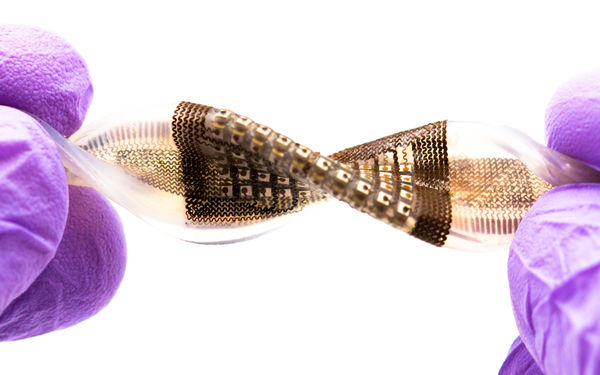
Flexible ultrasound patch could make it easier to inspect damage in odd-shaped structures
"Researchers have developed a stretchable, flexible patch that could make it easier to perform ultrasound imaging on odd-shaped structures, such as engine parts, turbines, reactor pipe elbows and railroad tracks—objects that are difficult to examine using conventional ultrasound equipment. The ultrasound patch is a versatile and more convenient tool to inspect machine and building parts for defects and damage deep below the surface. A team of researchers led by engineers at the University of California San Diego published the study in the Mar. 23 issue of Science Advances. The new device overcomes a limitation of today’s ultrasound devices, which are difficult to use on objects that don’t have perfectly flat surfaces. Conventional ultrasound probes have flat and rigid bases, which can’t maintain good contact when scanning across curved, wavy, angled and other irregular surfaces." [...]
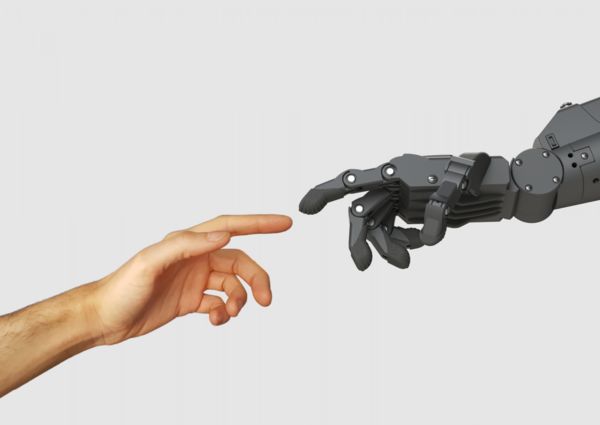
Students create 3D Printed robot prosthetic limb for amputees
"Students at The University of Manchester have designed and built a 3D printed, low-cost robotic prosthetic hand that could provide a much cheaper alternative for amputees. The hand’s joints are all fully posable with each individual finger and the thumb being able to move as well as make a fist. The functionality of the hand allows its user to do simple everyday tasks such as picking up items, eating using a knife and fork, typing and clicking a mouse or opening doors. It can even play rock-paper-scissors. But what also makes the prototype limb standout is its cost. The students built the hand for just £307 and reckon they can make it evening cheaper." [...]

Knitting electronics with yarn batteries
"“Waterproof and Tailorable Elastic Rechargeable Yarn Zinc Ion Batteries by a Cross-Linked Polyacrylamide Electrolyte” When someone thinks about knitting, they usually don’t conjure up an image of sweaters and scarves made of yarn that can power watches and lights. But that’s just what one group is reporting in ACS Nano. They have developed a rechargeable yarn battery that is waterproof and flexible. It also can be cut into pieces and still work. Most people are familiar with smartwatches, but for wearable electronics to progress, scientists will need to overcome the challenge of creating a device that is deformable, durable, versatile and wearable while still holding and maintaining a charge. One dimensional fiber or yarn has shown promise, since it is tiny, flexible and lightweight." [...]
Documentação
A documentação é parte essencial do processo de aprendizagem e a Internet além de artigos interessantes de explorar também tem alguma documentação em formato PDF interessante de ler. Todos os links aqui apresentados são para conteúdo disponibilizado livremente pelo editor do livro.
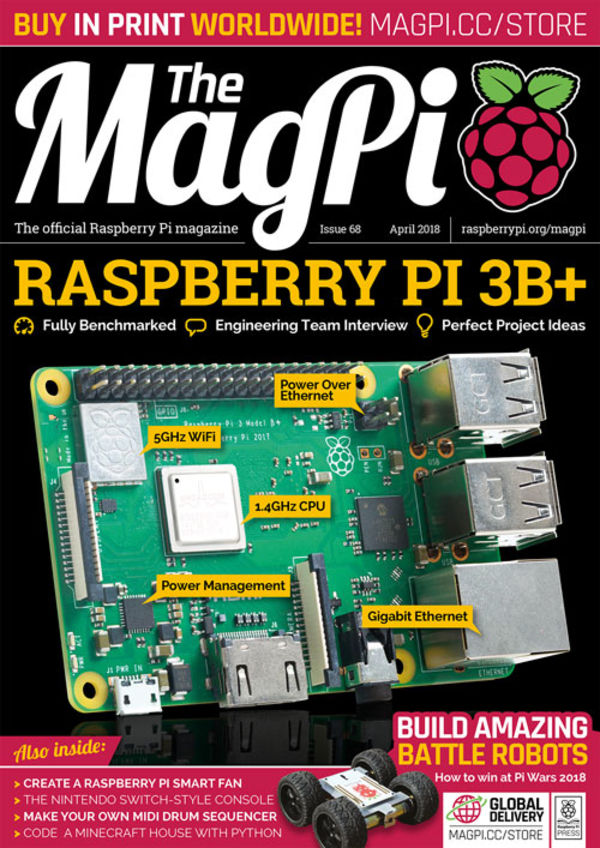
The MagPI 68
"Discover the new Raspberry Pi 3B+ in the April 2018 edition of The MagPi – The Official Raspberry Pi magazine. All this inside The MagPi #68 - Raspberry Pi 3B+. We fully benchmark the faster Raspberry Pi 3B+. Includes an interview with the engineering team and amazing project ideas for the faster computer. - Build Amazing Battle Robots. Get ready for Pi Wars 2018 with our guide to winning the Raspberry Pi robotic competition." [...]
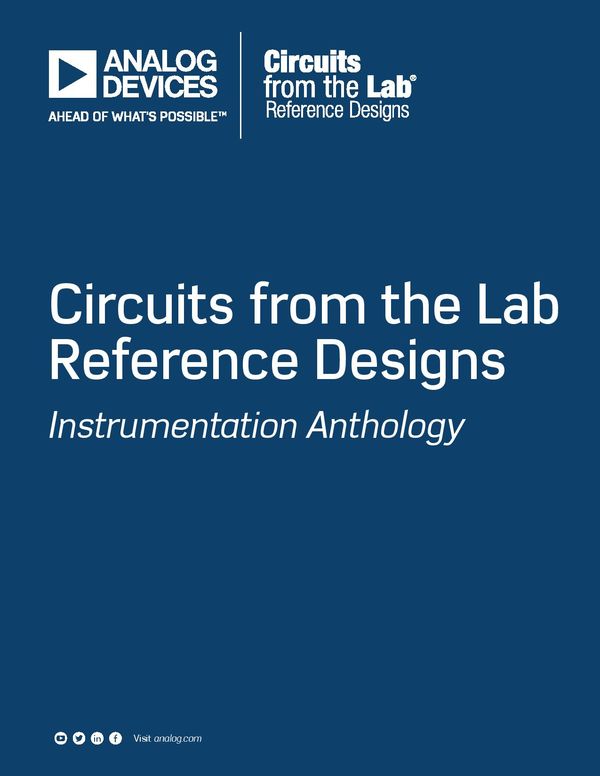
Circuits from the Lab Reference Designs - Instrumentation Anthology
"This instrumentation anthology of circuit notes contains more than 48 Circuits from the Lab designs specifically for analog, mixed-signal, and radio frequency (RF) design challenges within test and measurement applications. Instrumentation engineers can use these circuit notes as standalone solutions, or as foundations for more complex circuits and subsystems. Built and verified for function and performance by applications experts at Analog Devices, Inc., these circuit designs include - Comprehensive documentation for easier use with a variety of applications - Complete design and integration files to minimize system integration issues - Factory tested evaluation hardware for rapid prototyping with several development platforms These designs help save time, lower design risk, and improve time to market. " [...]
Projetos Maker
Diversos Projetos interessantes.

Tic-Tac-Toe Part-2 ( PIC16F627A )
"This is PART-2 of the Tic-Tac-Toe PIC16F627A project. On PART-1 I described the circuit operation, and the basic program flow. In this new section I will propose a possible "good looking" enclosure build for the device with large back-lit buttons. Here you will also find the links to the PCB, Hex code, Assemby (ASM) code, and the .cdr file for laser cutting the top panel. " [...]
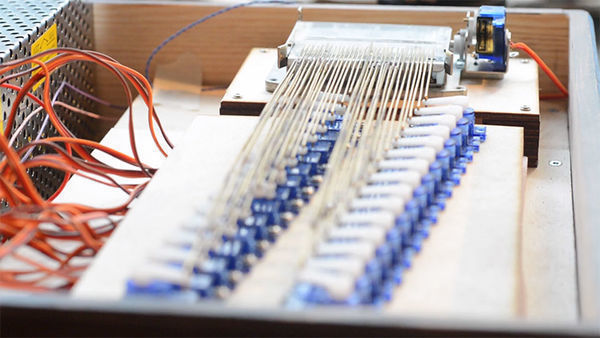
MIDI Music Box
"There are two ways to put MIDI files in your music box: the easy way, and the hard way. I tried both! Background: the paper tape This is the bit I didn't build. A ready made music box mechanism with 30 tuned tines to its comb, and blank paper tape for you to punch your tunes into. I really wonder how many people have actually gone to the trouble of punching an entire tune into the tape. Few things could beat it in terms of tediousness." [...]

Raspberry Pi Internet Radio and MP3 Player
"Raspberry Pi internet radio and MP3 player using a 3.5" LCD touchscreen. Raspberry pi internet radio and mp3 player This internet radio and mp3 player uses a 3.5 HDMI LCD touch screen for operation. The original project was published by Adafruit. https://learn.adafruit.com/raspberry-pi-radio-player-with-touchscreen/overview The project uses MPC , MPD and Pygame. " [...]
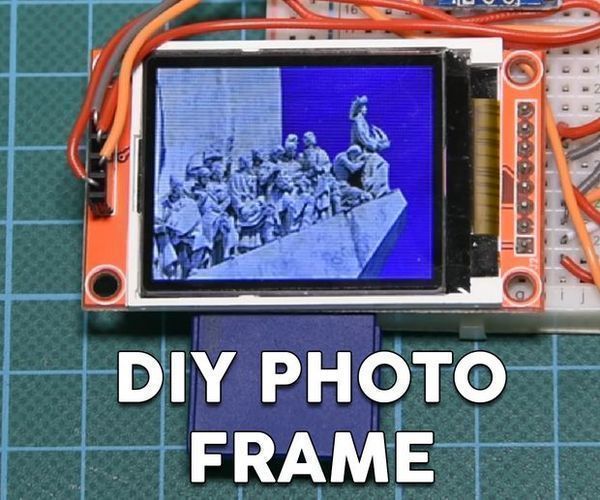
Diy Photo Frame With Arduino
"Dear friends welcome to another Instructable! This is Nick from educ8s.tv and today we are going to build this small but impressive digital photo frame using an Arduino. I am using the 1.8" color ST7735 TFT display a lot. The reason for that is that this display is very easy to use, it costs less than $5 and it offers color! At the back, the display has an SD card slot, so I thought that we have to learn how to use that as well. As it turned out, it is really easy to use the SD card slot on the display!" [...]

Self Balancing Robot Using PID Algorithm (STM MC)
"Recently a lot of work has been done in the self balancing of objects. The concept of self balancing started with the balancing of inverted pendulum. This concept extended to design of aircrafts as well. In this project, we have designed a small model of self balancing robot using the PID(Proportional, Integral, Derivative) Algorithm. Since then, this method is the new face of the industrial process control systems. This report reviews the methods involved in self balancing of objects." [...]
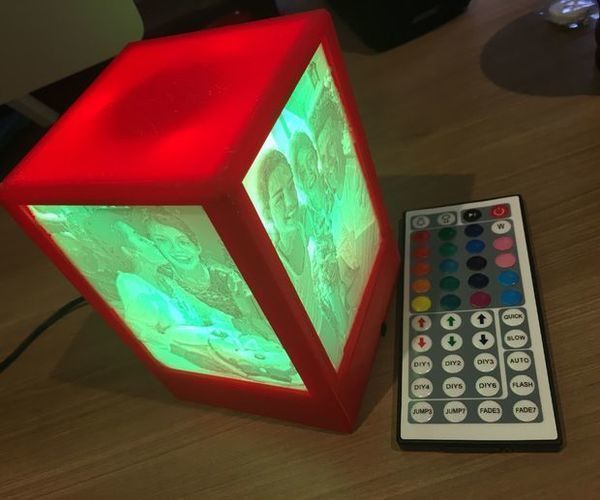
Lithophane Box With Remote
"Having been inspired once I learned about Lithophanes, I decided to design a Lithophane box using some LED light strip bits I had, using a simple 3D printed box. I chose to use the light strip system since I could control the colour and amount of light, as well as providing light fading through various colours. " [...]
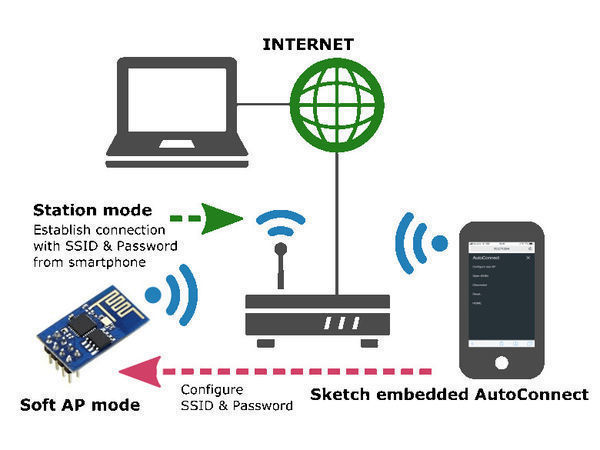
ESP8266 Connect WiFi Made Easy
"If you use ESP8266 with Arduino Core you will certainly be issuing instructions: WiFi.begin(SSID, Password). It can connect WLAN easily but the access point to be connected is fixed and inflexible. Whenever the access point to be connected changes, do you rewrite the sketch and upload it? You use AutoConnect as an Arduino library, you forget time and effort for the revising the sketch. It an Arduino library united with ESP8266WebServer class. Easily implementing the Web interface constituting the WLAN for ESP8266 WiFi connection." [...]
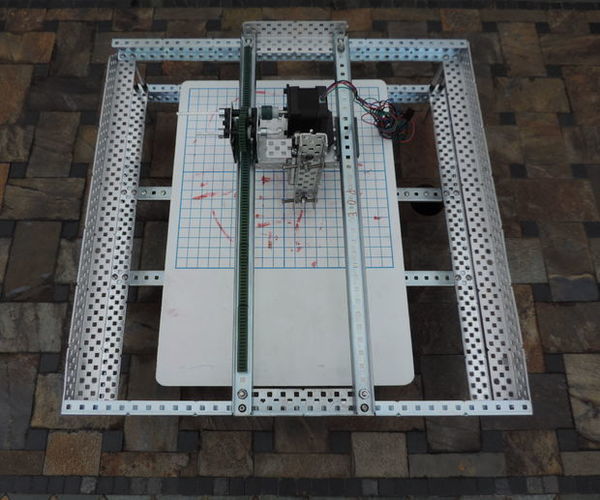
Vex And Arduino Drawbot
"Welcome! This Instructable is meant to acompany the science project, "Voltage Input & Robots" that was entered into the Solano County Science/STEM fair. This Instructable will cover the material and procedure required to build the Drawbot. Note, that the materials and tools required to build the Drawbot may be expensive or hard to acquire. We encourage those trying to build the Drawbot, to seek out the resources of various STEM and robotics programs at nearby schools, to help gain the tools and materials required. For those living within Solano county and/or have attended the Solano County Science Fair; some schools within the Fairfield-Suisun Unified School District, as well as the Travis Unified School District (specifically Armijo High School and Vanden) have exceptional VEX Robotics programs with said resources." [...]
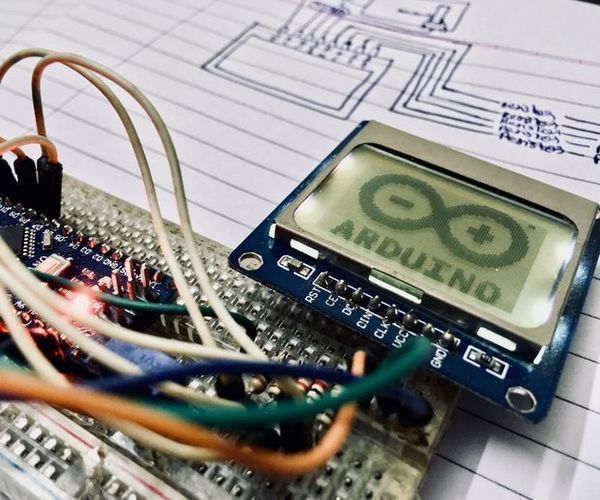
Custom Graphics On Nokia 5110 Display
"Hey guys! Moxigen here. About 3 years ago, I shut down my personal site (inKnowit.in) which had 30 blogs or so on it. I continued blogging here but I lost motivation very quickly and wrote only three blogs. After a lot of thought I have decided to continue blogging. I'd be posting very simple projects as of now." [...]
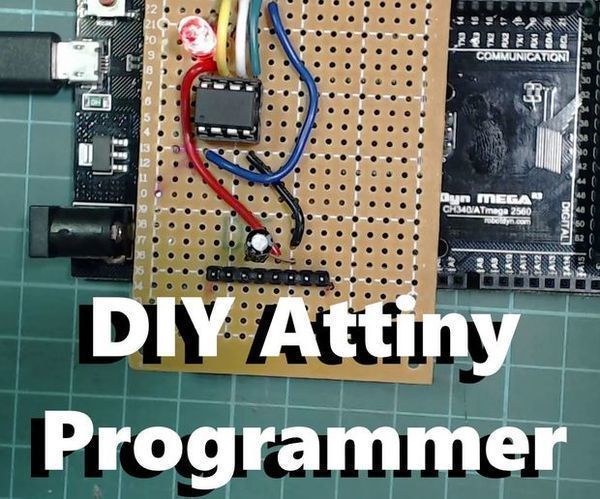
Diy Attiny Programming Shield
"If you are looking for a small and low powered Arduino board the Attiny is a really good option, its surprisingly featureful for it's size. It has 5 GPIO pins, 3 of which are Analog pins and 2 which have PWM output. It is also really flexible to the voltage that it runs off (2.7V to 5.5V) so it's perfect for running off batteries. Did I also mention it only costs about $1! ?The trouble is with the attiny is that you can't just plug a USB cable in to program it, but it actually isn't hard to build a programmer for it and that is what we are going to go through in this instructable. There are already lots of guides for building a shield, but there is a step missing when using newer versions of the Arduino IDE in the software setup in all the ones I checked that I will go through here as well.Check out the above video where I go through all the information that is in this instructable." [...]

Water Quality Tester
"This is a much bigger project and includes a lot more sensors such as Ultrasonic sensor, Dissolved Oxygen sensor, Infra-Red camera, a mobile App for graphical representation of the test results, just to mention a few. But thought to put this up for anyone having the desire to build their own simple water monitoring system or build upon this for their project as a beginner or novice. I might upload the final completion of the major project which will be completed somewhere in September in case someone's interested in the big thing coming. " [...]
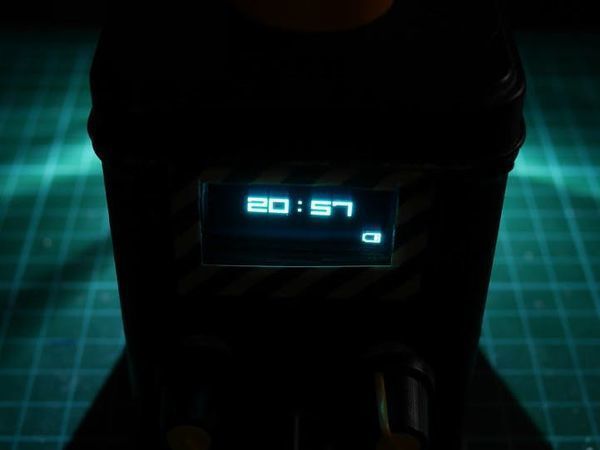
Industrial Alarm Clock
"A big and heavy alarm clock made from an old tea can, a big red button and few other parts... The origin story of this project is a bit unusual. We didn't really need an alarm clock, but we wanted to try out an OLED screen, some encoders and an MP3 player. The alarm clock seemed to be a perfect little "test drive" project. Oh, and we had a metal tea can and a fancy emergency stop button. Perfect for an industrial look and feel..." [...]
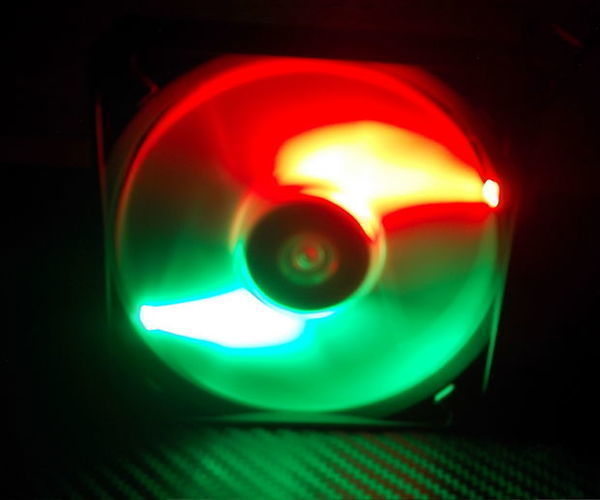
How To Make Led Fan
"I will show you how to convert your old boring fan into a nice glowing fan. I want to use 2 LEDs so I need to drill two 5mm hole. The LED direction is very important!!! Please take a look at the picture. After drilling the two holes I used a 3V battery to test LED in the hole to make sure it will work fine. (fan should turn on while testing) I used superglue to glue the LED into the fan and the fan was turned on so i was sure that the LED won't touch the blades." [...]
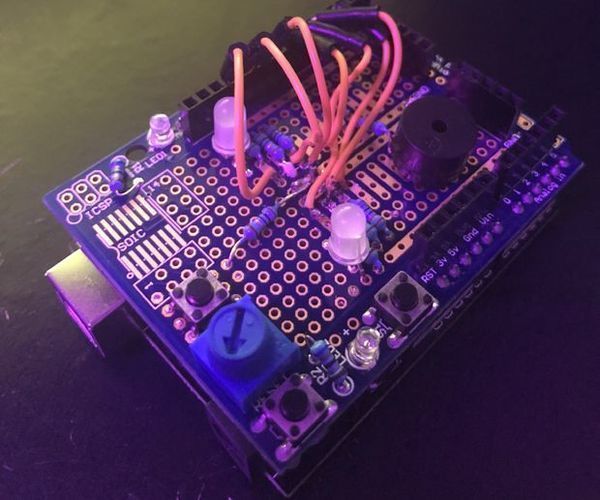
Short-Term Memorization Game
"Build your own Arduino-Based Memorization Game! In this game, one RGB LED will flash 3 random colors at the start, you will need to remember the color of each one. See where this is going? You'll use a potentiometer to change the second RGB LED and press a button to record each color from the first RGB LED. The second RGB LED will show you which color you have selected, and once you have recorded the sequence the RGB LEDs will either flash green and a sound will play from the buzzer signaling you have correctly guessed the sequence or both RGB LEDs will flash red and it will reset the sequence count back to 3* (this can be changed). You start the game off with having to remember the 3 colors shown, then if you correctly select the colors show, another random color will be added in the sequence." [...]
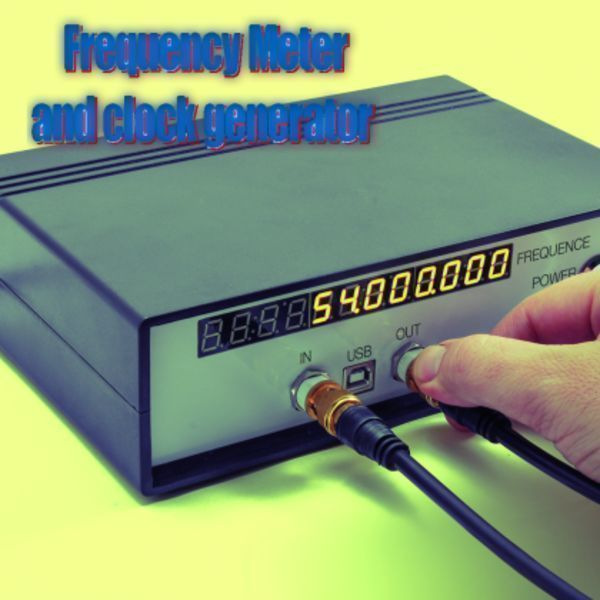
An Open Source Frequency Meter and clock generator
"If you’re looking for a tool for measuring frequency that is not the classic multimeter and, in the various drawers of your lab, between a forgotten board and various devices, you can’t find one, worry not: you don’t have to spend a fortune in professional tools, because we have you covered, creating the project you can find in these pages. It is a bivalent tool, since it both acts as frequency meter and clock generator, very useful in this era where logics and digital devices are extremely commonplace. You can surely find ready-to-use tools on the market, however it makes sense to create our own: it is not based on the classic integrated circuits, oscillators, counters or microcontrollers, but on an FPGA (Field Programmable Gate Array). And a programmable logics is also what is at the base of the Led Matrix controller board that we have proposed in the “big modular display” project presented in this post, where we stated that the same board could be reconfigured to carry out many other tasks, including a frequency meter, given the availability of BNC connections and the hardware support for frequencies revolving around 400 MHz. Ipso facto! We turned the Led Matrix controller in a bona fide 2-in-1 lab tool: a frequency meter and clock generator." [...]
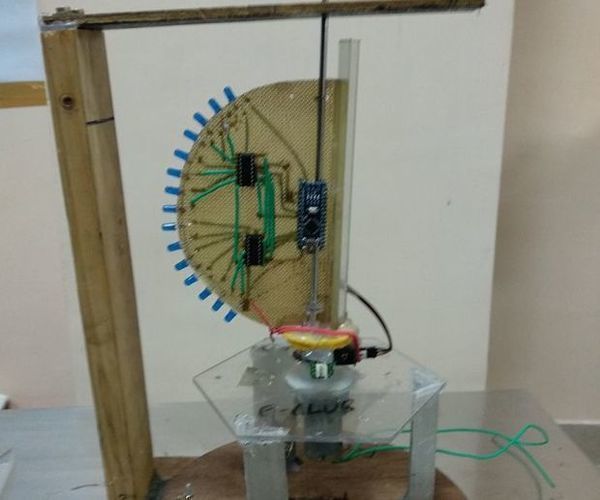
Spherical POV
"In this project , the concept of persistence of vision (POV) is used to generate a a pattern over a spherical surface using a circular strip of LEDS.The apparatus consists of 15 LEDs in a circular pattern rotating at a high rpm so as to form a persistence in human mind. " [...]

Phonetype: Photochemical Prints With A Smartphone
"We've become accustomed to taking digital photos, but at the expense of creating physical prints. So I thought that it would be pretty great if our smartphones could be used in a creative way to fill this void. After a lot of experimentation, I discovered that older photochemical processes could be modified to fit our cellphone's display. Traditionally these processes would use a method called "Contact Printing," by which a film negative or piece of acetate/polyester containing a negative image would be placed on coated paper. After exposure to Ultraviolet light (sunlight), a positive image would be formed. Our phones don't emit UV light, but they do emit blue light, which is close." [...]
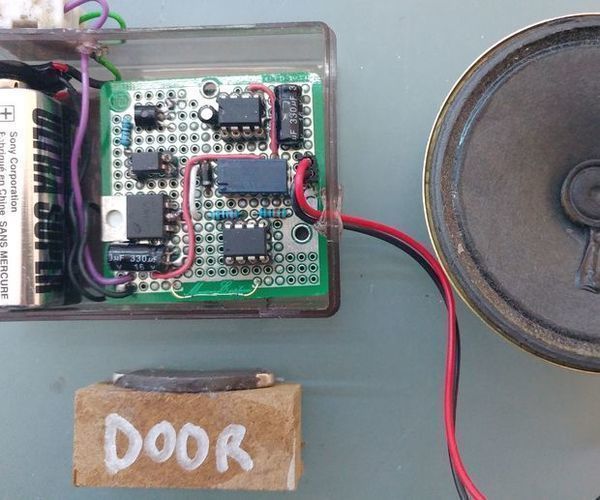
Door Alarm With Attiny
"Hi everyone, in this page i'm going to show you how i made a simple door alarm that is compact,loud and battery powered. There is a full list of what you need for this project, i savaged most of the components from stuff i had laying around, but you can easily buy them. AtTiny45/85: The brain of this project, you can use even an arduino board for this but i think it's way too overpowered. 5V Voltage regulator: i used a CJ78M05 to provide 5 volts for the Attiny. LM386: op-amp that runs the speaker. Speaker/Piezo: chose a loud one , not to high in impedance." [...]
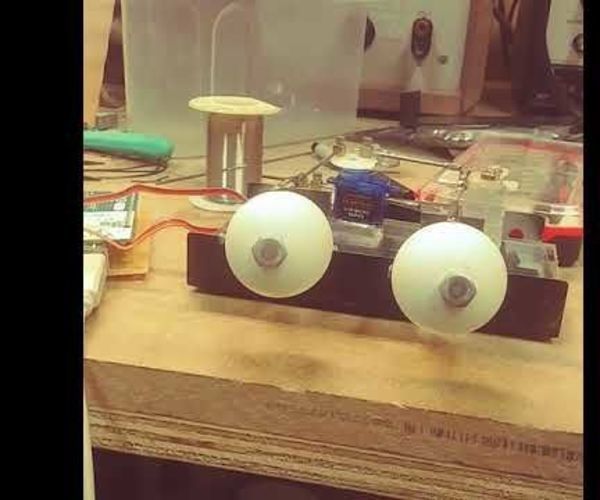
Animatronic Eyes With Servo Motors (Arduino)
"Welcome to a new project!!! First things first I really wanted to do some creepy eyes like they do for costumes and Halloween. I love special effects and wanted to learn and build my own animatronic eyes using an arduino, servos, and ping pong balls. Step 1: Gather Supplies... 2 servo motors (I went with the cheapest possible at a Hobby Town store) arduino uno (adafruit) linkage rods (Hobby Town) 2 half shafts (Hobby Town) 2 ping pong balls connectors (Hobby Town) Styrofoam Head (Michaels) other misc items... " [...]

ESP32 With RFID: Access Control
"How about a method of automatic identification through radio signals that can bring you security and control the access of people to a certain location? This is possible through radio frequency identification or RFID from the English Radio Frequency Identification. And it is the assembly of this system that I am going to teach you today. This system works with a card or it can also be a key chain that has a chip inside it. Through the identification of the data of this card or chip is that it is possible to do access control, a method widely used in records of employee points, public transportation, libraries, among others. Our goal, therefore, is to create a program in which we can either read an RFID card (or tag) or write the data to it." [...]
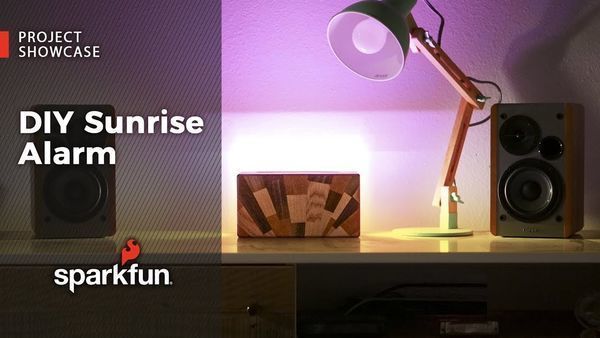
DIY Sunrise Alarm
"Waking up is the worst. Let's try and make it a little easier on ourselves. The waking is the hardest part Let’s face it, waking up is the worst. If you are anything like me, your room is still pitch black when it’s time to get up and the struggle is real. Every type of alarm sound I’ve tried has just become a trigger to hit the snooze button. I’ve seen several of these sunrise alarm clocks that claim to be better for your sleep-wake cycle and wanted to try them out, but never pulled the trigger." [...]
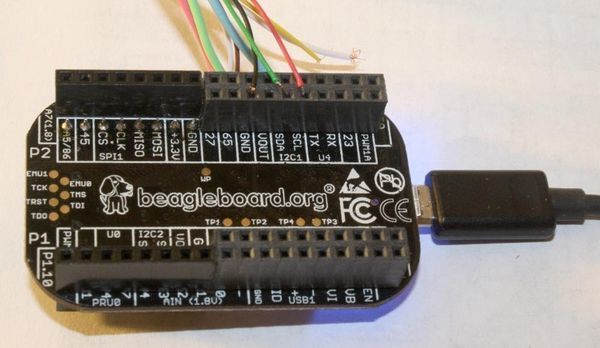
Reading a VGA monitor's configuration data with I2C and a PocketBeagle
"Have you ever wondered how your computer knows all the characteristics of your monitor— the supported resolutions, the model, and even the serial number? Most monitors use a system called DDC to communicate this information to the computer.1 This information is transmitted using the I2C communication protocol—a protocol also popular for connecting hobbyist devices. In this post, I look inside a VGA monitor cable, use a tiny PocketBeagle (a single-board computer in the BeagleBone family) to read the I2C data from an LCD monitor, and then analyze this data. To connect to the monitor, I cut a VGA cable in half and figured out which wire goes to which pin.3 The wire (above) is constructed in an interesting way, more complicated than I expected. The red, green, blue and horizontal sync signals are transmitted over coaxial-like cables formed by wrapping a wire a spiral of thin copper wires for shielding.2 The remaining signals travel over thinner plain wires. Several strands of string form the structural center of the VGA cable, and the ten internal wires are wrapped in a foil shield and woven outer shield." [...]
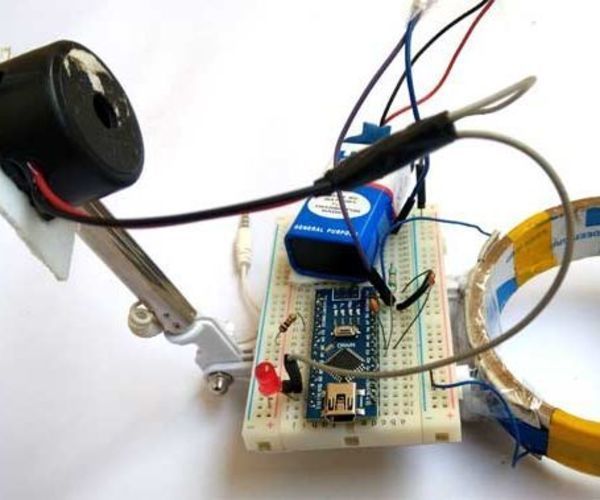
Arduino Metal Detector
"Arduino is an open source computer hardware and software company, project, and user community that designs and manufactures single-board microcontrollers and microcontroller kits for building digital devices and interactive objects that can sense and control objects in the physical and digital world. In this Instructable, we are going to make a Metal Detector. PS : This is not intended for total beginners. A metal detector is an electronic instrument which detects the presence of metal nearby. Metal detectors are useful for finding metal inclusions hidden within objects, or metal objects buried underground. But the metal detector we are going to make won`t be useful in actual cases, Its just for fun and learning." [...]
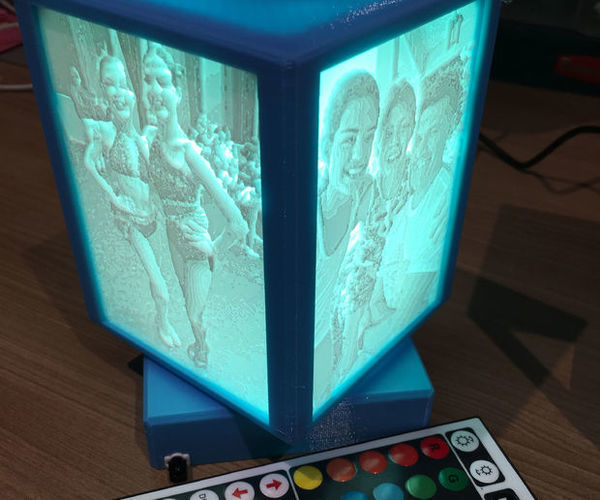
Rotating Lithophane Box
"This Rotating Lithophane box is a derivative of my previous box, with the added feature of rotation! My wife liked the first version, but said that it would be much better if it rotated. Makes sense. I thought about incorporating a small stepper motor, or a servo motor to get the box to rotate, but since this is more of a static object that will be sitting around most of the time, it doesn't need to be fancy, or overly complicated. A slow, nearly imperceptible rotation would be ideal, about one full rotation every hour or so. Hmm, what rotates once every hour?" [...]

ESP32 Bluetooth Reflow Oven
"In this tutorial I'll show you how to build your own wireless reflow oven so you can assemble quality PCB's in your kitchen without having to worry about manually turning the knobs and worrying if your boards are getting too hot! Not only that but we'll be using the built-in Bluetooth Low Energy (BLE) functionality of the ESP32 (because what else would you use in 2018) as well as an add-on module I've built as part of an open-source reflow control ecosystem called "Reflowduino". We'll also be programming everything in the Arduino IDE environment and using what we've learned in a previous tutorial to control the reflow setup with a custom Android app. I've provided all design files, example Arduino sketches, demo app, and project wiki (lots of info!) on my Reflowduino Github page. If you haven't already, please see this tutorial on using the ESP32's Bluetooth Low Energy feature with Arduino IDE and establishing two-way communication with a custom Android app because it has a lot of pertinent information related to what we'll be covering here." [...]
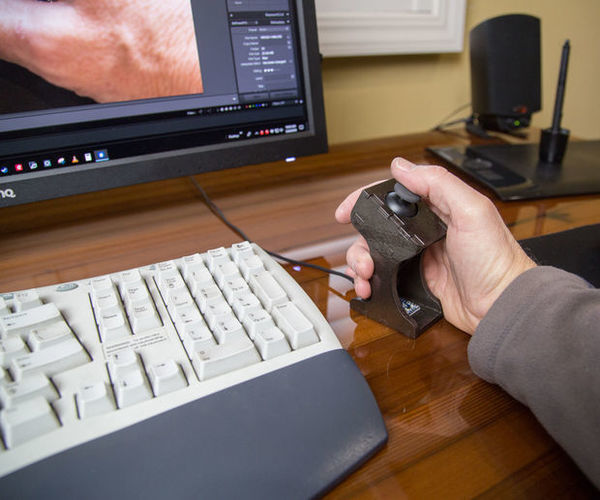
USB Keyboard Joystick
"It's simple to make custom USB keyboard and mouse controllers. I use a few keyboard shortcuts when rating pictures in Adobe Lightroom, and found that I can be even faster using a simple game controller joystick. I mocked it up on a breadboard with two components I already had in my workshop and found that it worked great, but it needed a nicer "cabinet" for it to live on my desk. Because it is Arduino based, customizing the joystick functions and add additional buttons, dials, or other controls is easy. " [...]

ILI9341 Touch Shield For Wemos D1 Mini
"Hi Makers! I made an ILI9341 shield for Wemos D1 mini series. Using this shield I can use all functions of the 2.8" TFT. It works as a screen (of course), additionally I can harness the touch function and the SD socket also. This instructable is inspired by this acticle of Nailbuster Inc. In the next some steps I will show how can you make your own shield." [...]

Diy Word Clock
"Today, I will show you how to build a Word Clock. It is basically a clock which displays time using words. I will also show you how to use a Shift Register and RTC using a microcontroller. Shift Register can come in very handy if you run out of pins in a microcontroller, so its a good thing to learn about them. Wait no more and get right into it. " [...]
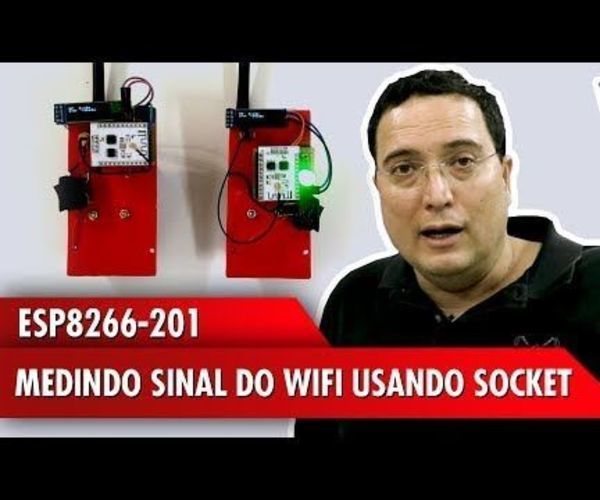
ESP8266-201: Measuring Wifi Signal Using Socket
"In this video we will talk about ESP8266-201. I know that few people know this version, but I like it a lot because of its possibility of antenna connection. We then made an assembly to measure the signal strength of WiFi. To do this, we made the ESP201 an Access Point. We remotely communicated a second ESP8266-201 client with server and measured the signal strength between them (dbm). So we took two ESP201s that have a PigTail connector and connected to an antenna." [...]

Autobooch Automate Your Kombucha Brewing System With A Raspberry Pi
"Tired of unpredictable brewing times for your kombucha? Worried about the health of your SCOBY pellicle? Look no further! The AutoBooch has your back! Don't know what a SCOBY is? Have no fearwe cover that here." [...]

Arduino Perpetual Calendar Clock
"The clock uses 2 electro mechanical clock movements controlled by an Arduino to display the Day and Month. A third quartz controlled movement displays the time tide Low or High tide. The Calendar is fully automatic and takes into account leap years as well as summer and winter time changes. The clock also has full Westminster chime of all 4 quarters and hourly chimes. The clock is stand alone no Master Clock required.It has a built in Decoder for the DCF77 "Atomic Clock". An Auxiliary LCD display shows time,date and also DCF77 signal and decoder information." [...]

Battledip
"This project is a good introduction to digital logic circuits as it will utilize basic concepts of Boolean logic and memory in circuits. You will be using chips such as a Dual D-Type Flip Flop, Quad 2-input XNOR gate, and Dual 4-Input AND gate that is all available in the 7400 series in both TTL and CMOS logic or also the 4000 series. Following similar principals from the classic game, Battleship, this game adds a time crunching element where each player needs to figure out the opponents code on the DIP switch before they figure yourss out. Parts You Will Need 8 x Dual D-Type Flip-Flop: (74HC74 - Lee's ID: 71439) (74LS74 - Lee's ID: 7255) (4013 - Lee's ID: 7196) 2 x Quad 2-input XNOR (Exclusive-NOR) Gate: (74HC266 - Lee's ID: 71762) (4077- Lee's ID: 7226) Possible alternatives if XNOR chip is not available: 2 x Quad 2-input XOR (Exclusive-OR) Gate: (74HC86 - Lee's ID: 71297)(4070 - Lee's ID: 7221) 2 x Hex Inverter (NOT) Gate: (74HC04 - Lee's ID: 71684) (74LS04 - Lee's ID: 7241) (4069 - Lee's ID: 7220) 1 x Dual 4-Input AND Gate: (74HC21 - Lee's ID: 71700) (4082 - Lee's ID: 7230) 1 x 5V Voltage Regulator (LM7805 - Lee's ID: 7115) 1 x 9V Battery Clip (Lee's ID: 6538)1 x 9V Battery (Lee's ID: 83741) 3 x Breadboards (Lee's ID: 10686) 4 x Tack Switch (Lee's ID: 3122) 4 x 4-Position DIP switch (Lee's ID: 367) 32 x 10K 1/4W Resistors (Lee's ID: 9284) 16 x 1K 1/4W Resistors (Lee's ID: 9190) 6 x 110 1/4W Resistors (Lee's ID: 9102) Solid Wires (Lee's ID: 2249) Jumper Cables (Lee's ID: 21802)" [...]
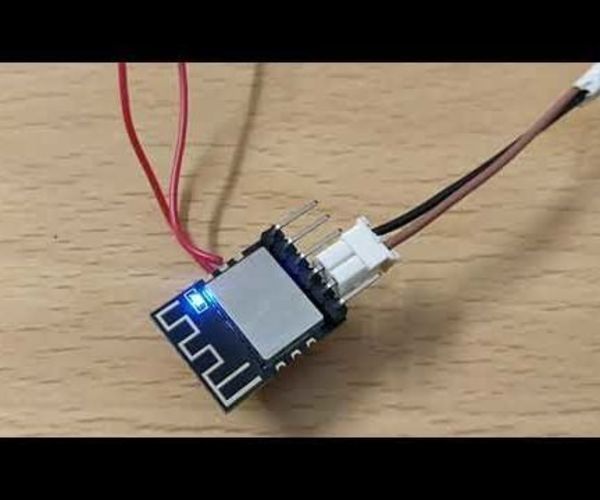
How To Get Started With Esp8285 Module ?
"Introduction: Spent many head breaking hours just to get started with this tiny latest ESP8285 M3 board but unfortunately could not get even single link where all the information was present in one place. So thought of sharing this article with you all. Lets get started... ESP8285 is a coin sized SoC(System on Chip) IoT(Internet of Things) capable board with very less power consumption(Deep Sleep option compatible). In this article will be demonstrating how to upload basic Blink led code. What is ESP8285? ESP8285 = ESP8266 + 1M Flash, so that it can withstand high temperatures up to 125 degrees Celsius!" [...]

Camera Slider Control
"Slide your camera back and forth automatically for cool shots while building stuff or showing off products - powered by Arduino Nano board. Do you need a camera slider to get really interesting action shots of you building something, a product, or even what you've built? Servocity offers a good slider kit, but doesn't have a ready-made controls assembly for it. This post will outline how to take a servo motor modified for continuous rotation, and adapt it to that kit in order to make it truly portable. The downside is that it will be difficult to make it go as slow as the original kit, but not having to drag around an umbilical cord makes it easy to transport to your preferred filming location. You'll also need a servo plate, coupling, standoffs, and a couple 6-32 screws to properly mount the servo." [...]

Beautifully Finished Humidity and Temperature Sensor
"We built a stylish and useful humidity and temperature sensor for our home workshop that uses color to alert us to big swings in humidity. Learn how we built a walnut dovetailed case and used easy-to-find Arduino components to build a stylish and useful humidity and temperature monitor for the wood shop. This DIY project showcases a bit of woodworking with walnut dovetails and beginner electronics using an Arduino Uno and some excellent parts from Adafruit. We live in Central Texas where we get massive swings in Humidity and Temperature in the Spring, which can be disastrous for certain woodworking projects. This cool project helps alert us when the humidity is changing or starts to get high so we can take precautions like moving our wood projects into the house, or not doing any milling during the high humidity weather. It also looks awesome and has our sweet logo!" [...]
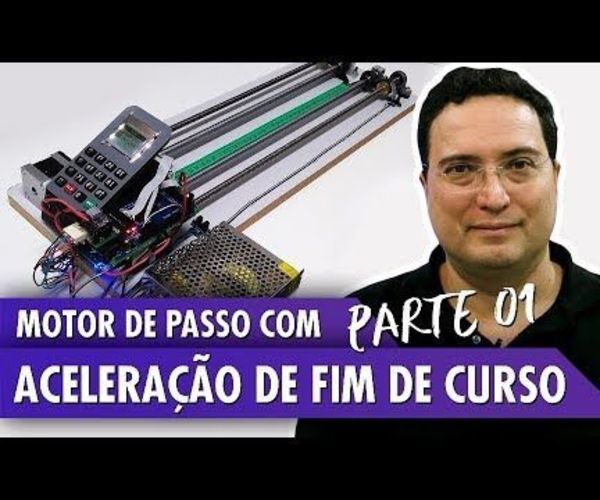
Step Motor With Acceleration And End Of Stroke
"Acceleration of the step motor and the limit switch. These issues that we are going to discuss in this article, in which I will present you with a motion test assembly. In addition to the concept of end switches, I will also demonstrate an example of stepper acceleration code. Can I handle stepper motor without accelerating? Yes I can. Just leave the speed constant." [...]

DIY 3D-Printed Lithophane
"I have been spending a lot of time with our 3D printer lately. Whenever I get to know a tool pretty well, I always try to look for a project that ties in my creative interests (visual arts) with newer technology. I spent a good few years in undergraduate and high school studying fine arts and photography, so I was naturally quite excited when one of our developers told me about 3D-printed lithophanes. What is a lithophane, you ask? It’s a specific kind of artwork that can only be seen clearly when backlit, meaning light is an element of this creative technique. Traditionally, a lithophane is a thin porcelain tile with an etched artwork on one side." [...]

Make A Mini Wireless Keyboard From Your Tv Remote
"Have you ever thought of making a wireless keyboard by hacking your TV remote. So in this instructables I am explaining how you can build a cheap mini wireless keyboard . This Project utilizes IR(Infrared) communication to create a custom wireless keyboard. " [...]
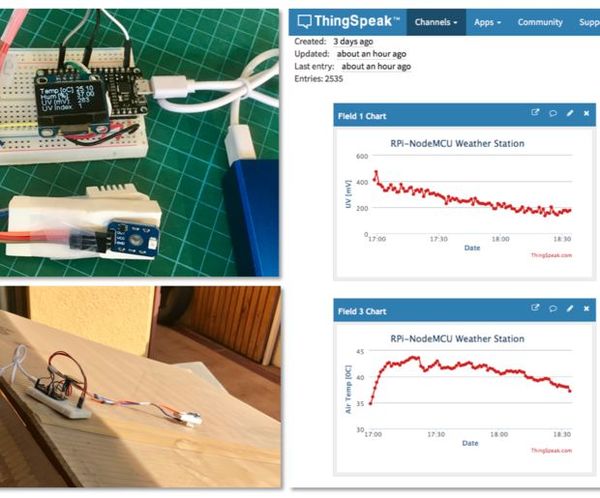
IoT Made Easy: Capturing Remote Weather Data: UV And Air Temperature & Humidity
"On this tutorial, we will capture remote data as UV (Ultra-Violet radiation), air temperature and humidity. Those data will be very important and will be used in a future complete Weather Station. The block Diagram shows what we will get at the end. " [...]
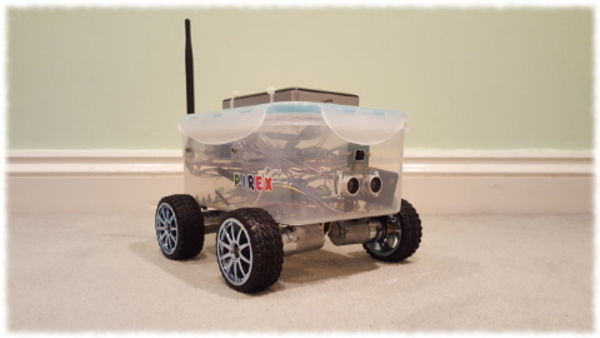
PiRex - remote controlled Raspberry Pi based robot
"The article describes the PiRex robot controllable from either a web browser or a dedicate client application by using REST API. Last year I did publish the cam2web open source project, which is aimed for streaming cameras over HTTP as MJPEG streams. Although being developed to support number of platforms, the very original target was to stream camera from Raspbery Pi, so it could be watched remotely. That project by itself can be used for a number of things like home security, IoT devices, etc. However, originally it was started as the first step for another project - building a remote controlled robot. I did some hobby robotics projects in the past." [...]
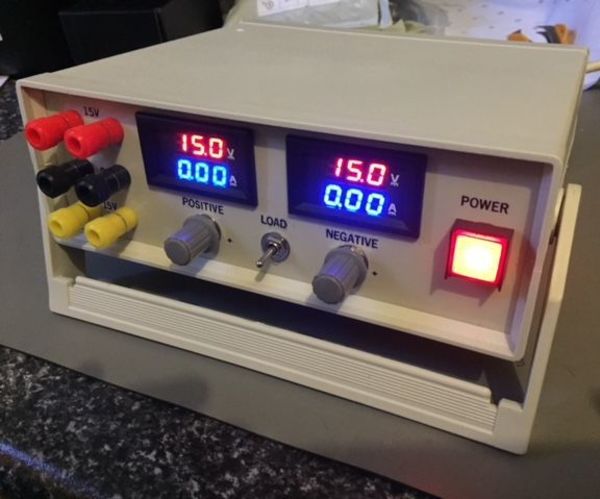
Build a Dual 15V Power Supply Using Off the Shelf Modules for Under $50
"Introduction: If you're a hobbyist that deals with audio, you'll be familiar with dual rail power supplies. Most low power audio boards such as pre-amps require anywhere from +/- 5V to +/- 15V. Having a dual voltage power supply makes it just that much easier when prototyping designs or just general repairs. This power supply is easy to put together as it generally uses off the shelf module boards with the exception of the regulator board, which you'll have to build yourself. However there is a reason behind that which I'll come to later on. The regulator board used boasts voltages from +/- 1.25V to 37V (depending on your input voltage)." [...]

Tiny Graphics Library for ATtiny85
"This small graphics library provides point, line, and character plotting commands for use with an I2C 128x64 OLED display on an ATtiny85 It supports processors with limited RAM by avoiding the need for a display buffer, and works with I2C OLED displays based on the SH1106 driver chip. These are available for a few dollars from a number of Chinese suppliers. To demonstrate the graphics library I've written a simple application to measure the temperature every 15 minutes over a 24-hour period and display it as a live chart. Introduction The monochrome OLED graphics displays are accessed a byte at a time, and each byte represents 8 pixels; to plot a point you need to change just one pixel leaving the others unaffected, so you need to know what the previous contents of the byte were. The usual way to implement graphics commands on this type of display is to use a RAM buffer, and do all the drawing into the buffer. You then copy the entire buffer to the display when you want to update the display." [...]

Automatic fan controller for server racks
"In this post we describe fan controller which we designed for our 9U wall mount server cabinet. This fan controller is designed to drive a 12V DC cooler fan with pre-configured intervals or by monitoring the temperature of the server cabinet. Core components of this fan controller is CD4060 binary counter, LM35 temperature sensor and LM358 operational amplifier. In this design CD4060 is used as long duration timer and it can configured to trigger cooler fan from 1-minute and up to 4-hour. In this design LM35 temperature sensor is used to activate cooler fan in specified temperature. This sensor stage is useful to drive cooler fan when timer stage is in inactive state." [...]
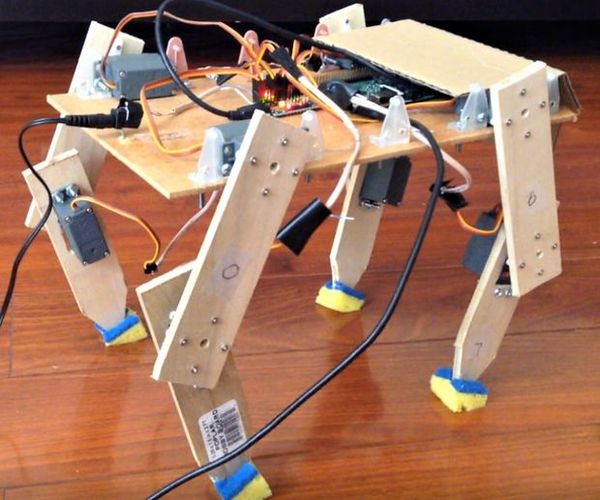
Quadruped Robot
"Have you ever wanted a robot that acts just like a real animal? The ones you can buy are outrageously expensive and not customizable. Well, you can learn how to make one right here! Not only is it of good quality, but it is also inexpensive and good to gain valuable experience in robotics. It is very simple and easy to make, with easy to obtain materials. I didn't have any prior experience on making robots or coding, so you can do it too!" [...]

A Coin Cell Uv/white Flash Light in 30 Minutes or Less!
"Hello everyone!I recieved some UV 5mm LEDs yesterday. I've been looking to make something with these for a while. My first interaction with them was a couple of years back during a visit to China. I bought a keychain light with these and it's quite useful.For the instructable, I made a small flashlight that's not very bright, but is useful nonetheless in less than 30 minutes. If this is something you want to have a go at, read on! " [...]

Digital Circuits 2: Some Tools
"When we work on electronic circuits, there are some tools that get frequent use. Things like multi-meters, oscilloscopes, and waveform generators. Working with digital circuit has some use for those, but brings with it different requirements that require different tools. We'll have a look at some of these. These are fairly simple and can be made quite easily. Logic Probe by Dave Astels With analogue circuits, we need to measure voltages, currents, waveforms, and the like." [...]
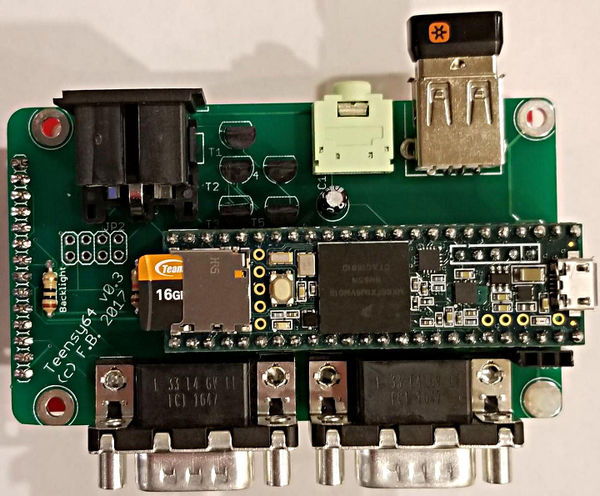
Commodore C64 Emulator
"The project stated a few years ago someone asked Frank if it was possible to emulate the C64’s Sound Interface Device (SID) chip on the Teensy 3.2. He found a good reverse engineered SID (reSID) and ported it to the Teensy 3.2. Unfortunately the current reSID versions require a lot of RAM, so he had to switch to an older version. Then Teensy 3.6 was announced. The 256KB of RAM, more than enough flash memory, SD slot, and 180 MHz speed made Frank think it was possible to emulate a complete Commodore C64. In order to make the emulation happen, challenges with the display needed to be addressed." [...]
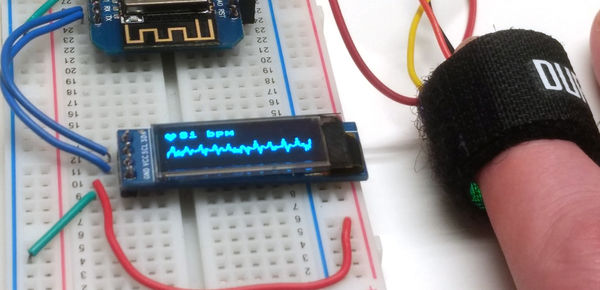
Building a MicroPython heart rate monitor
"Pulse sensors have become popular due to their use in health-monitors like the Fitbit. The sensors used are cheap, simple and pretty reliable at getting a reasonable indication of heart rate in daily use. They work by sensing the change in light absorption or reflectionby blood as it pulses through your arteries — a technique jauntily named photoplethysmography (PPG). The rising and falling light signal can be used to identify the pulse, and subsequently calculate heart rate. Most commercial sensors (Fitbit, etc.) use green-light based sensors and similar sensors are available for use in your own projects." [...]
That's all Folks!


